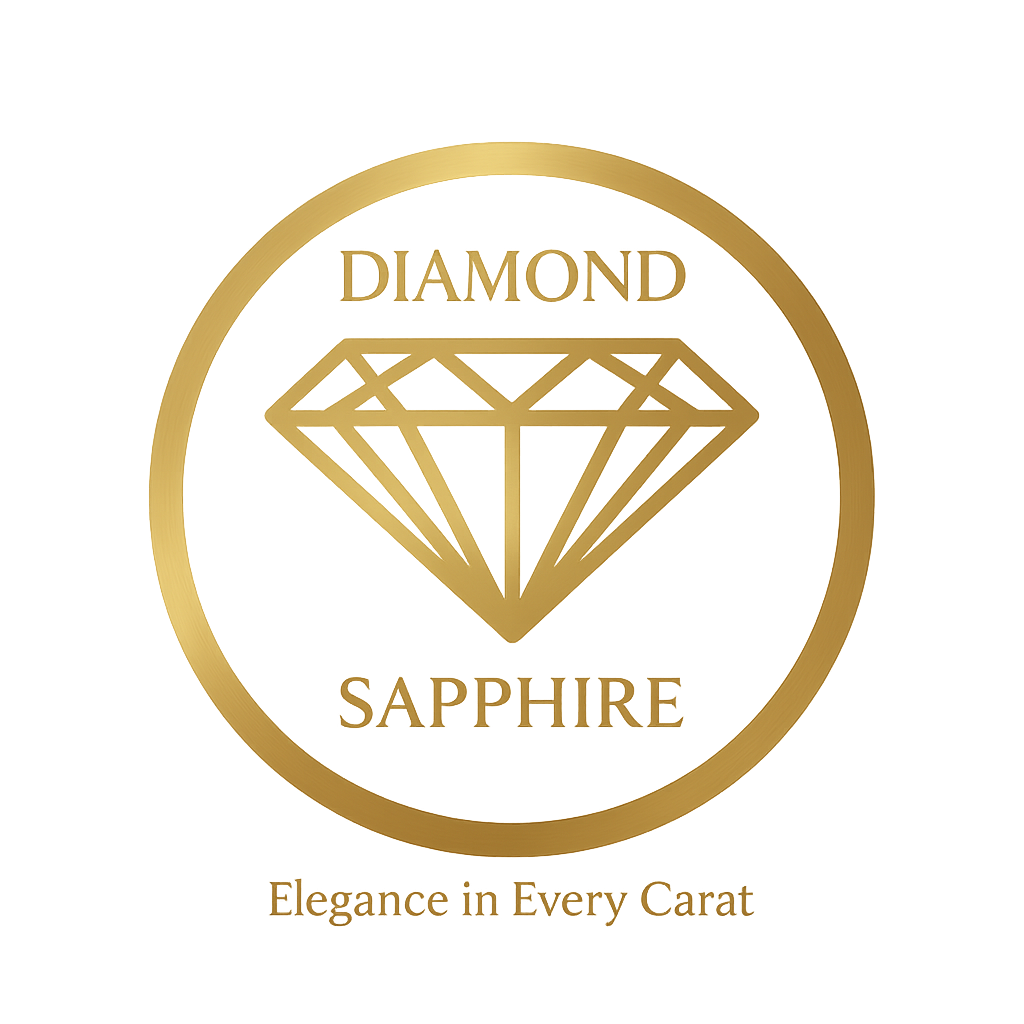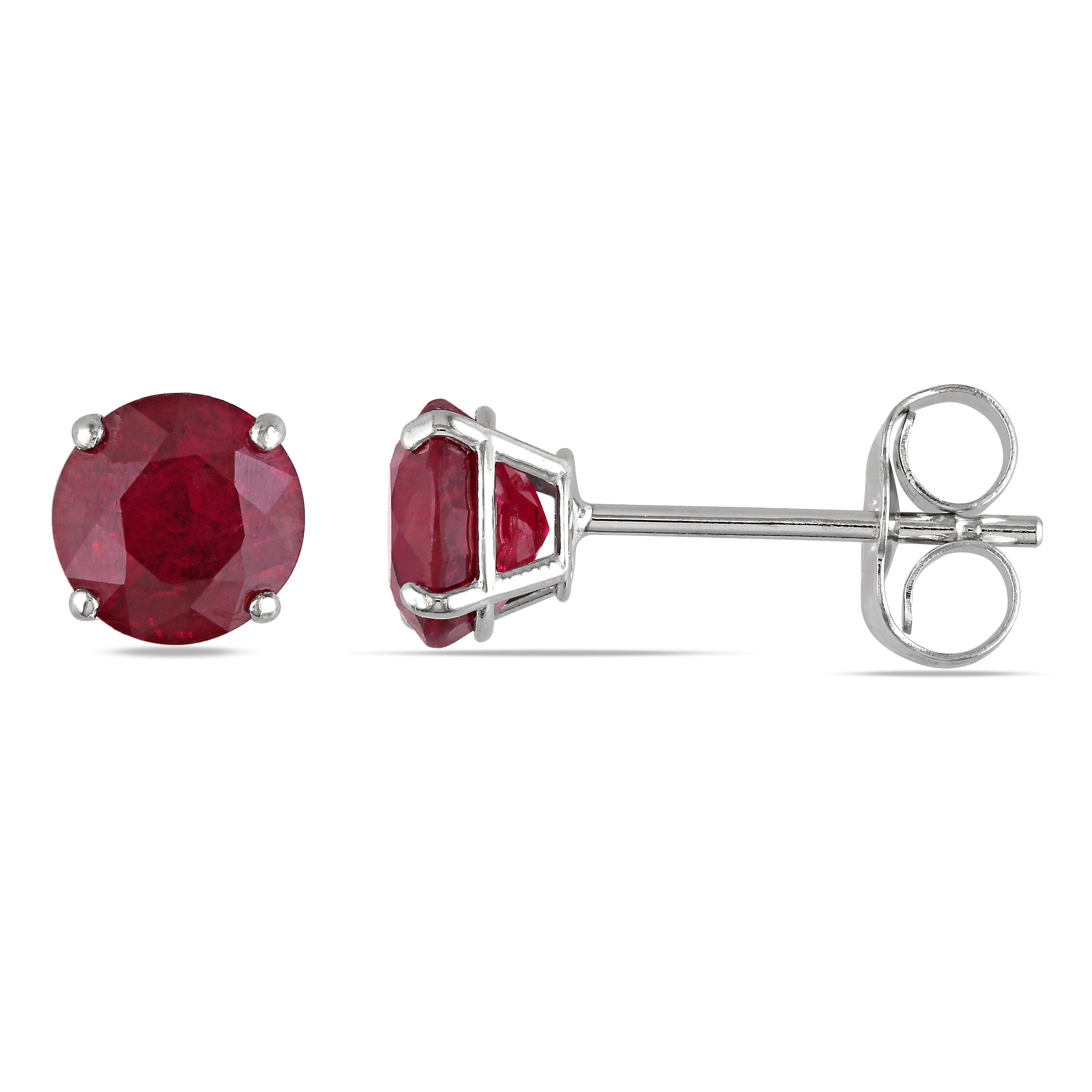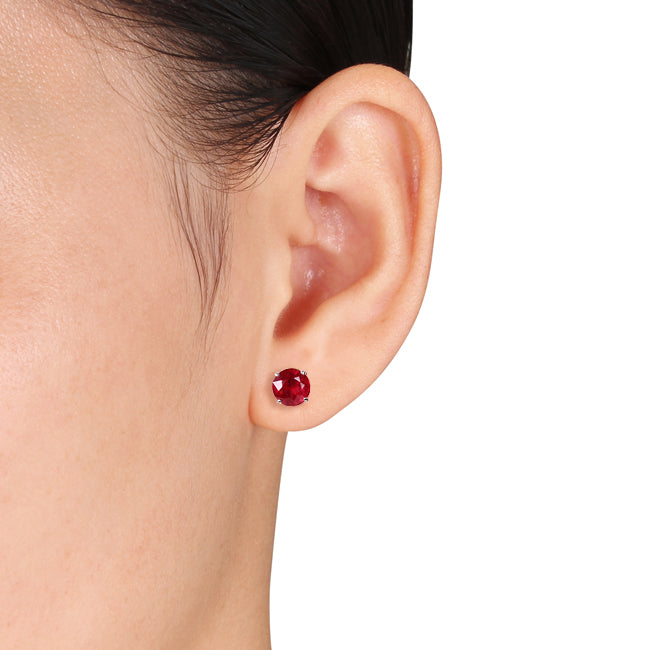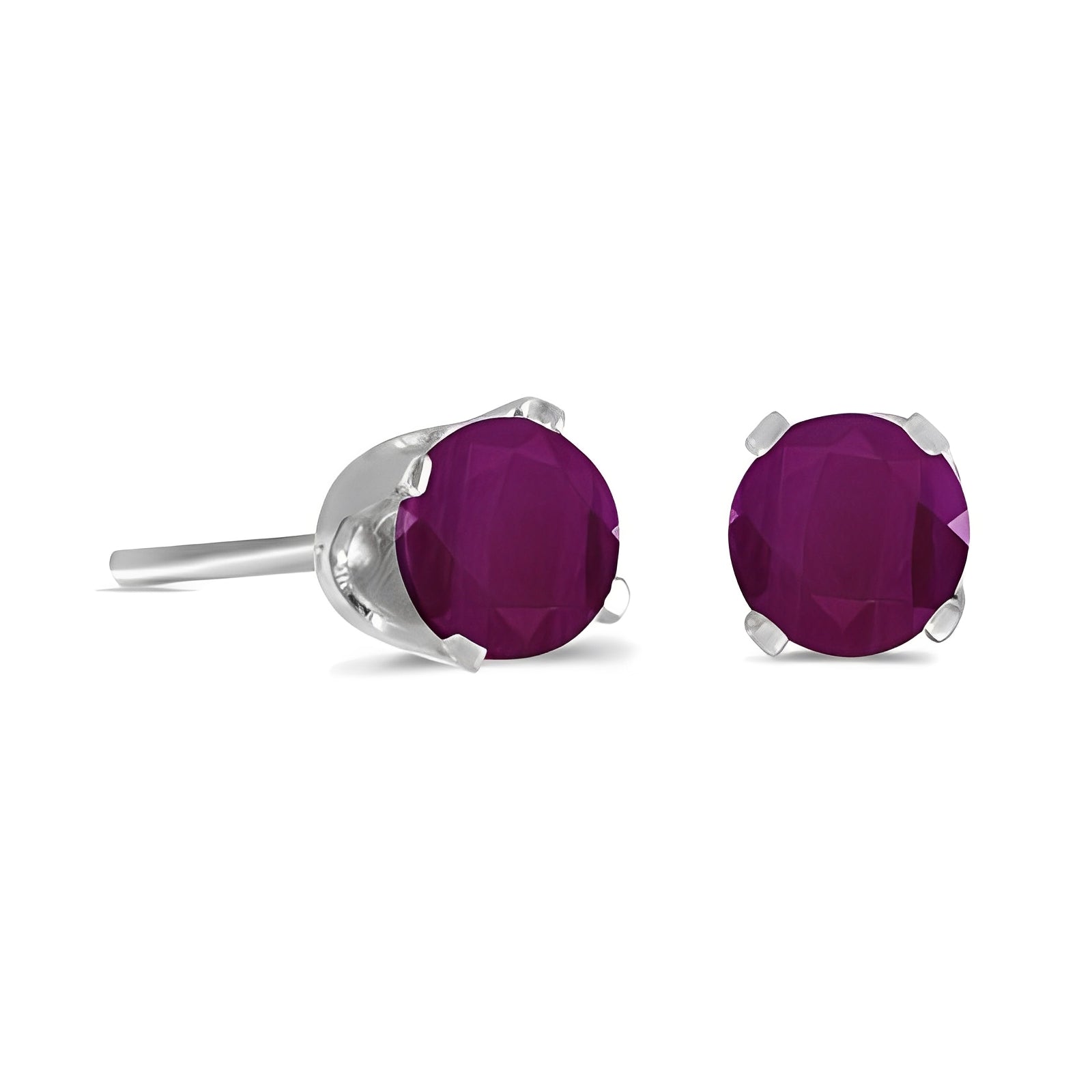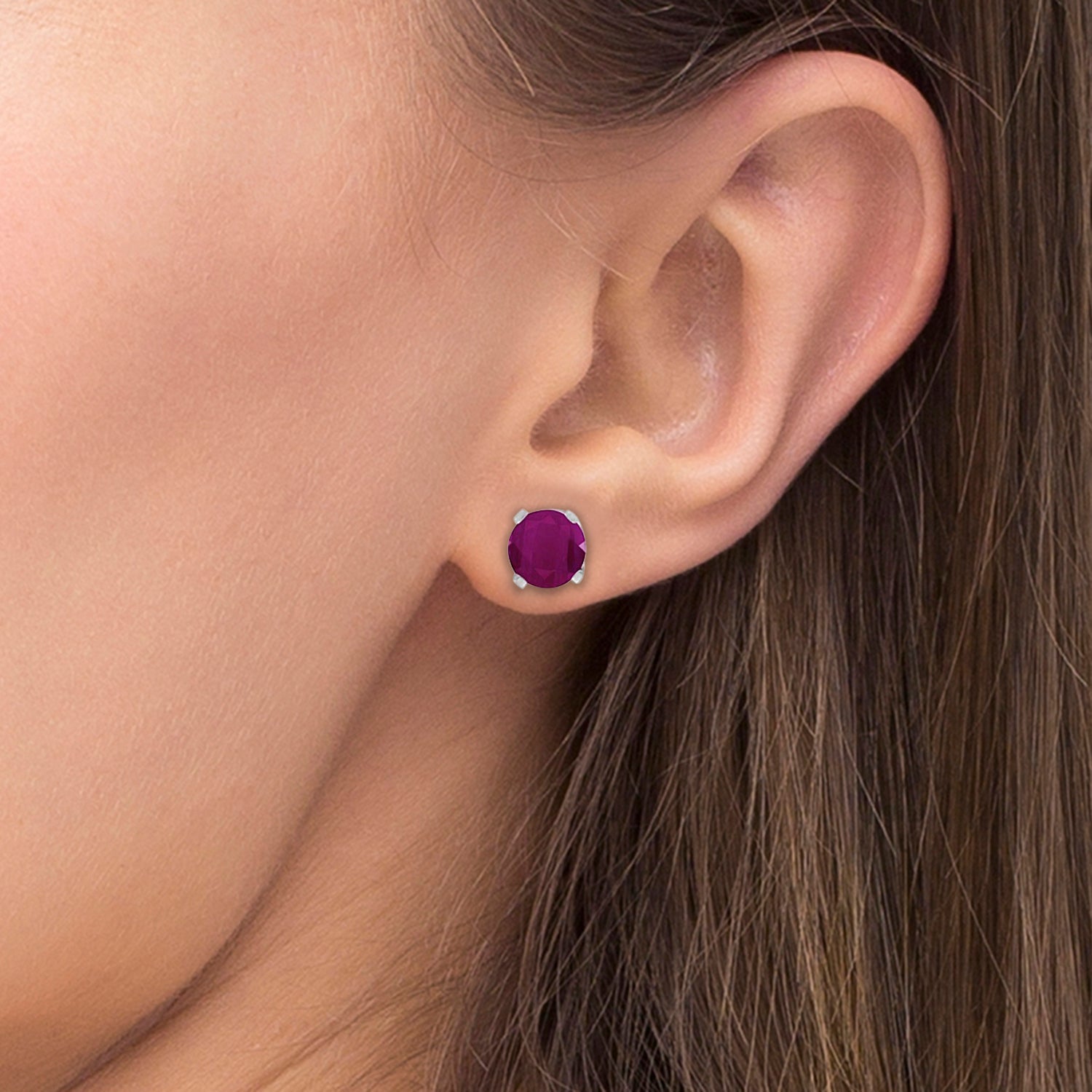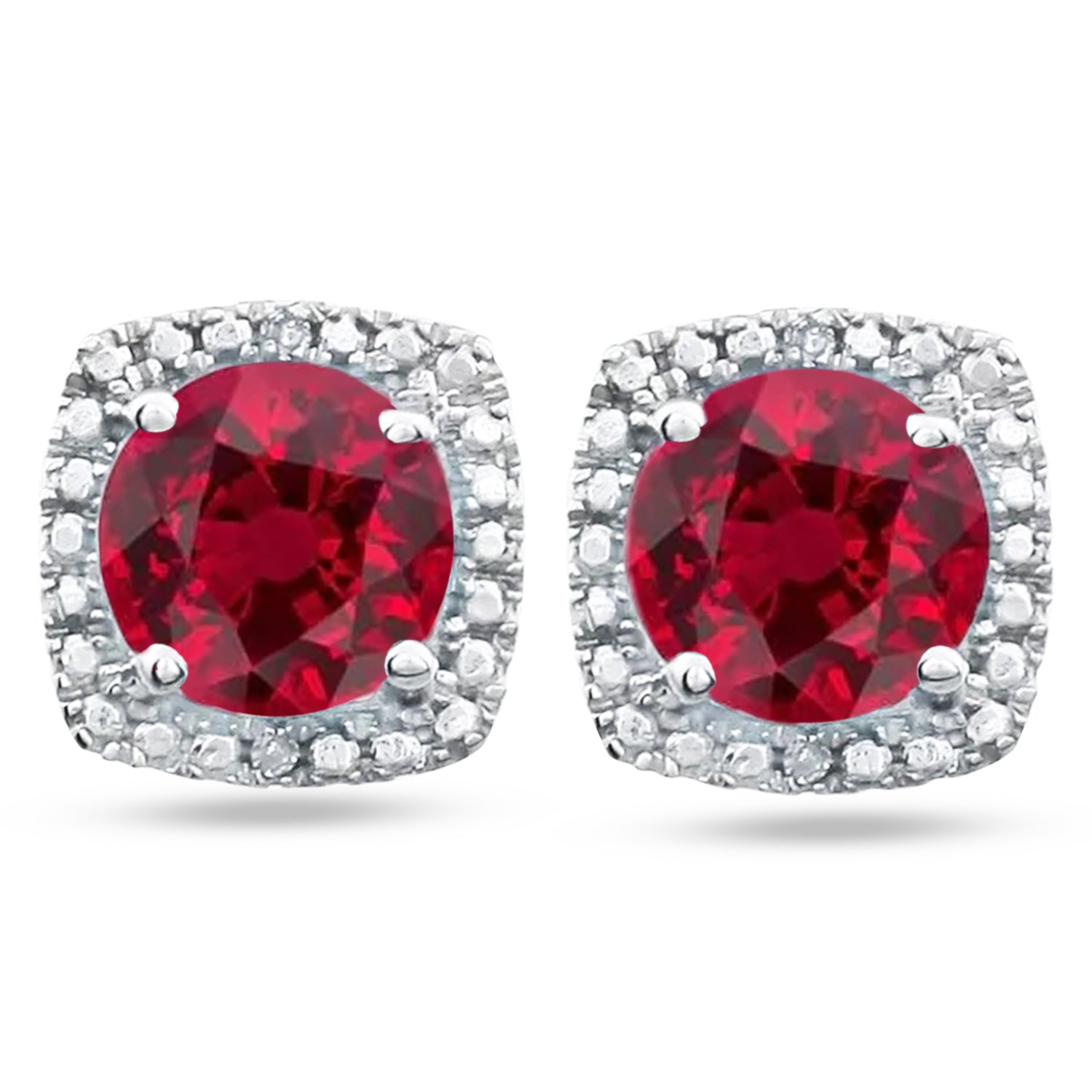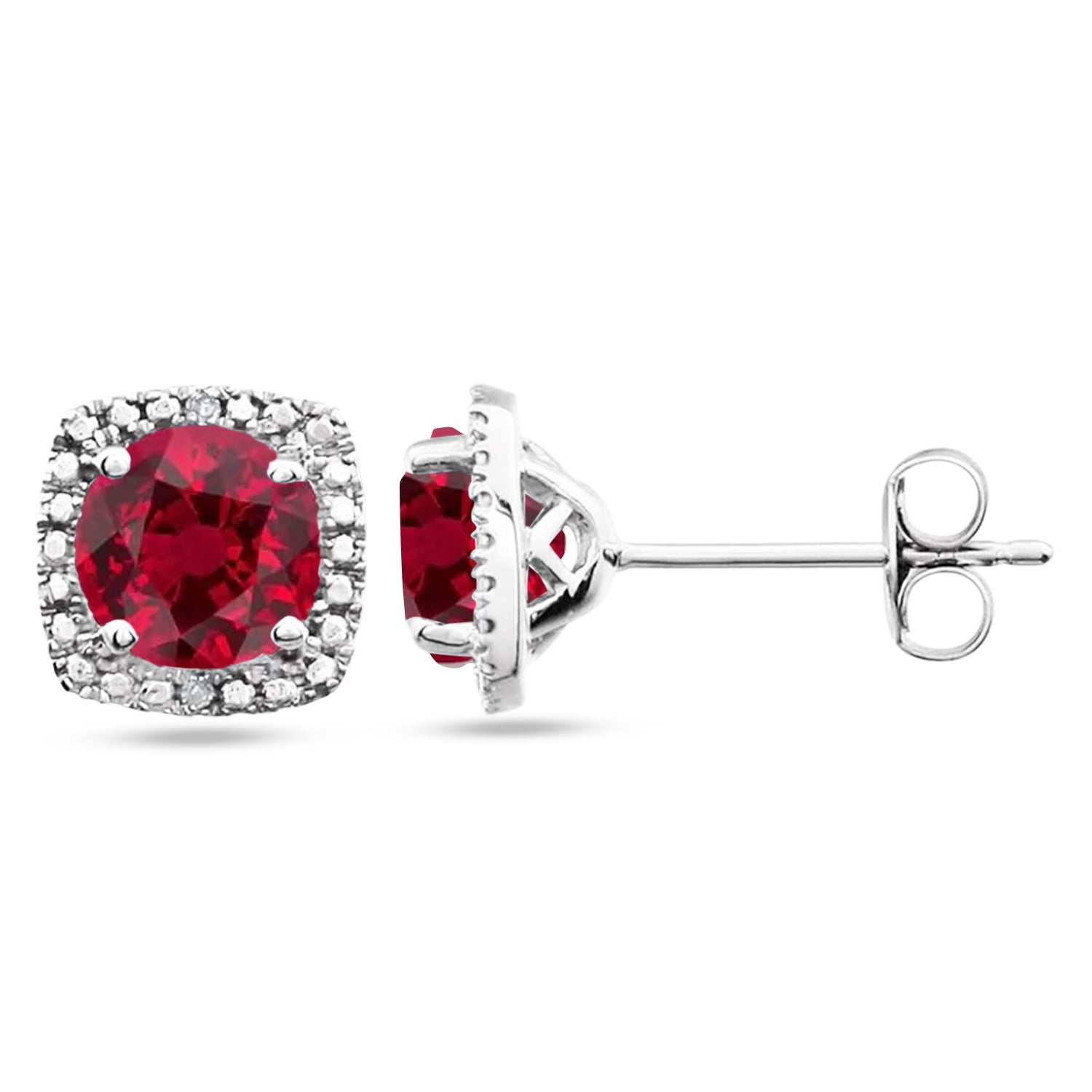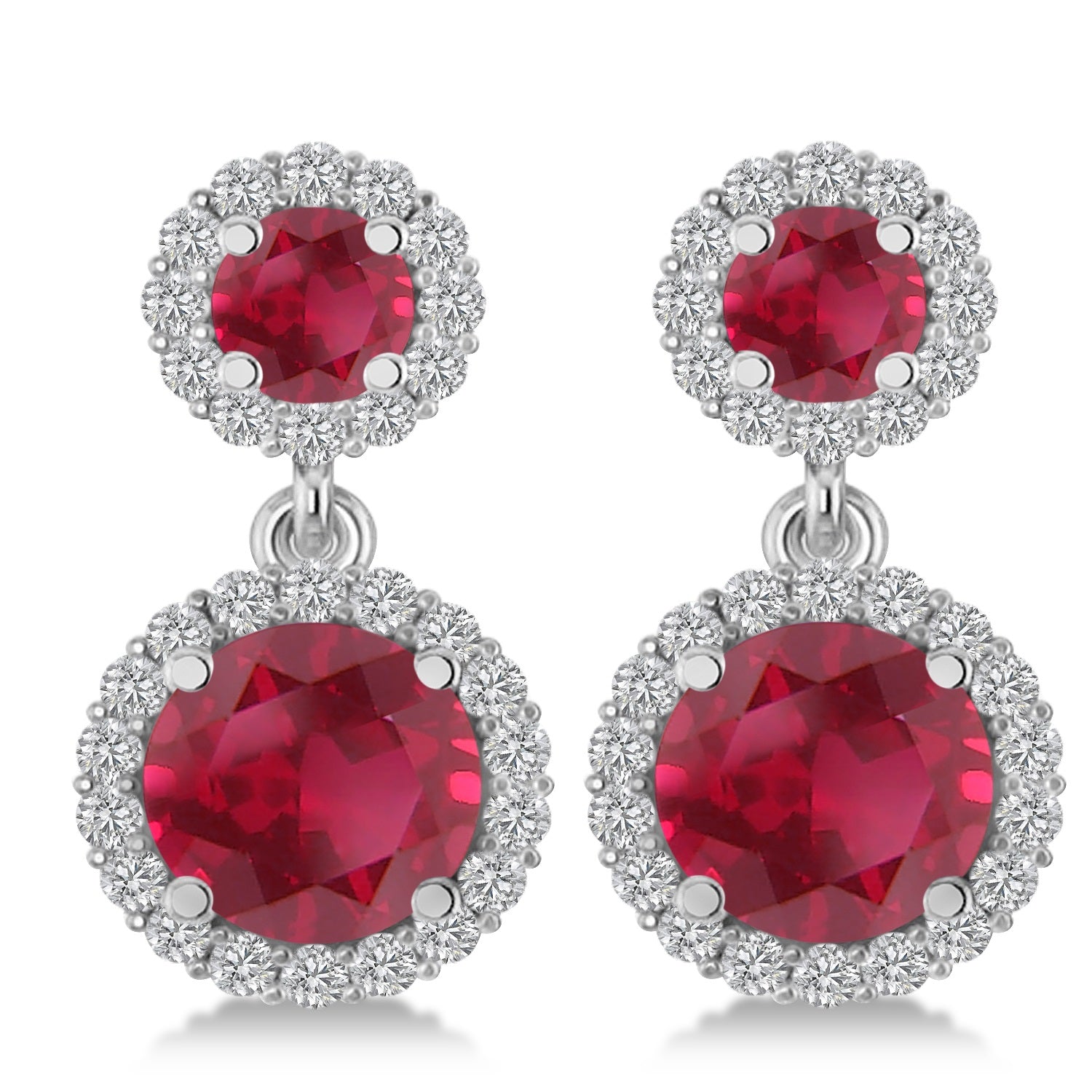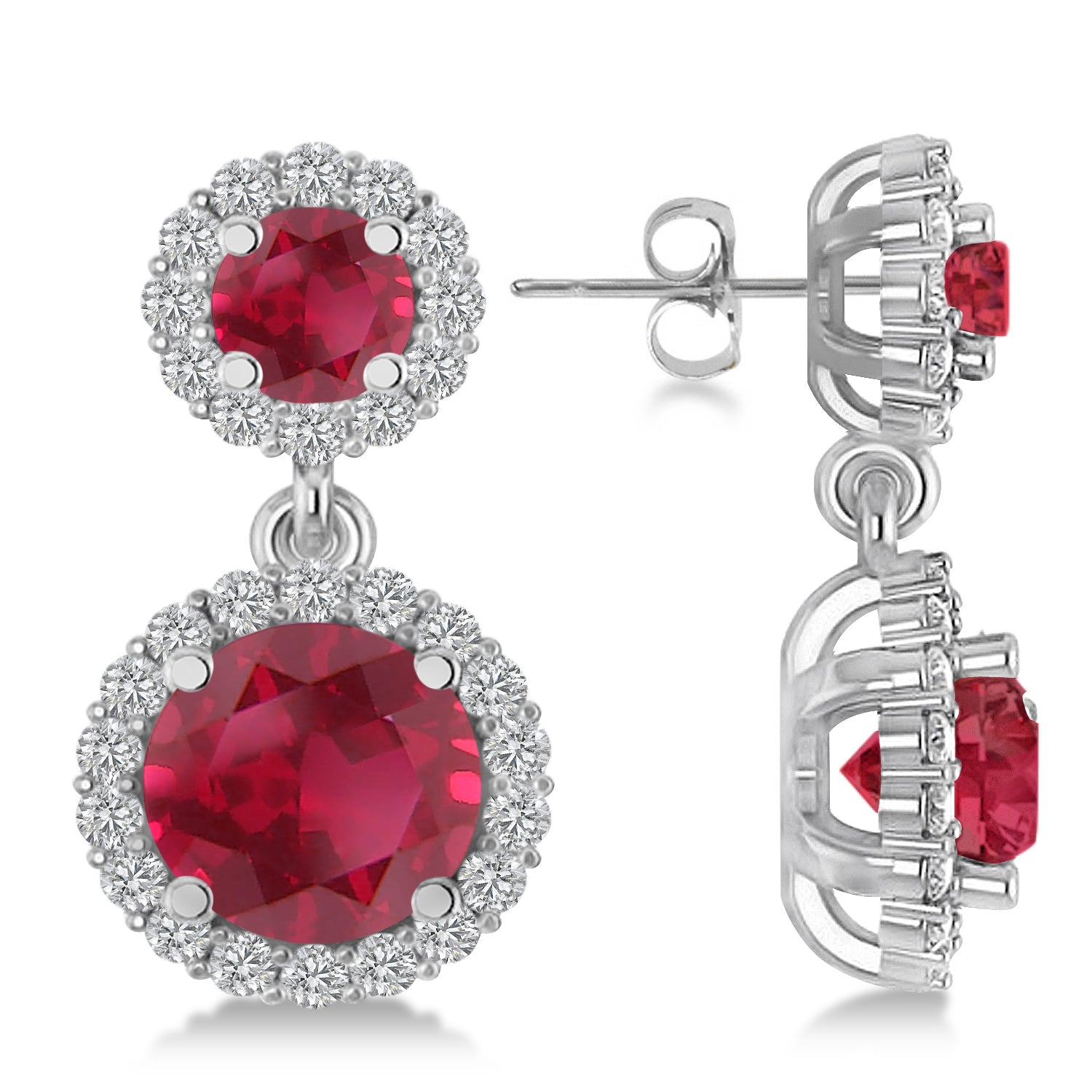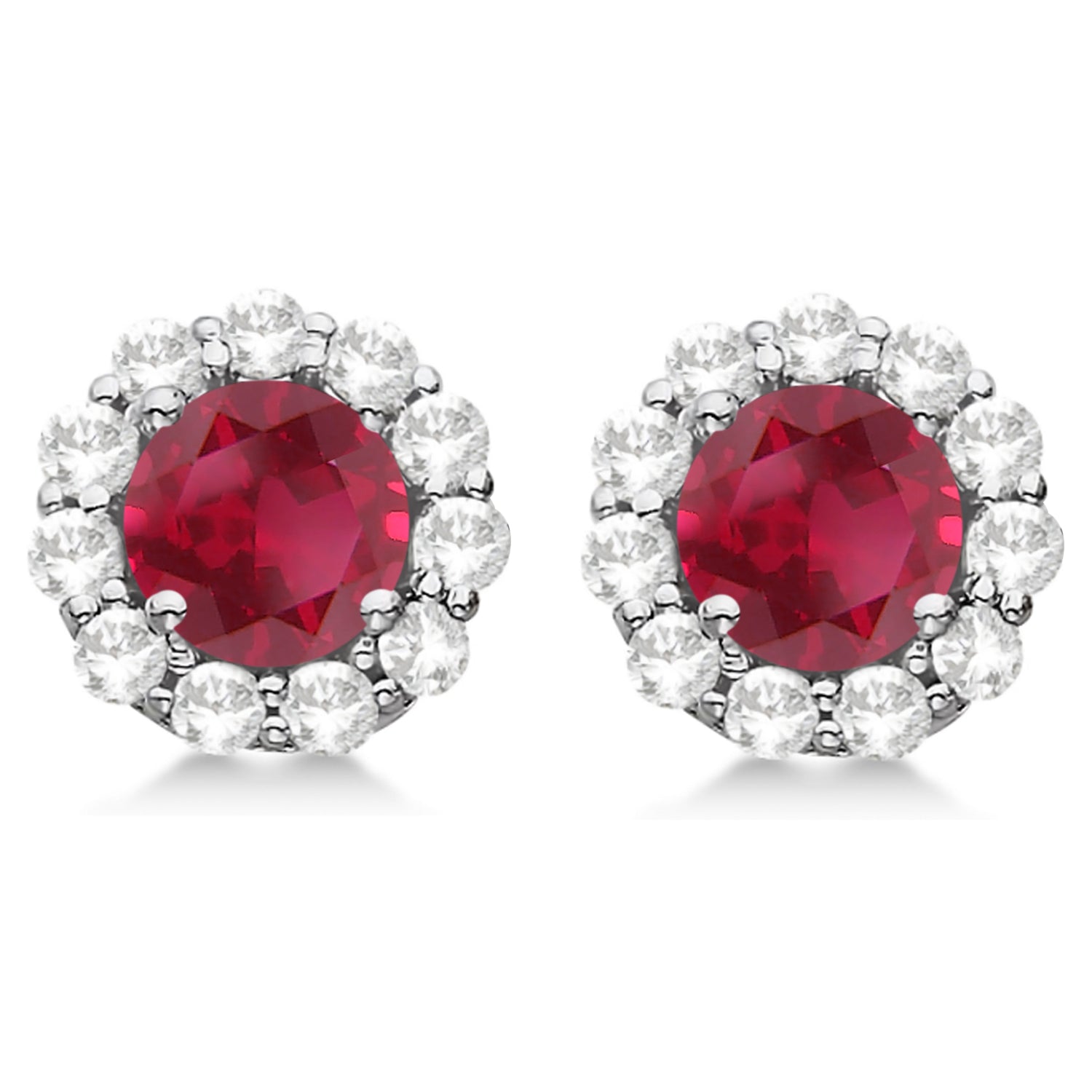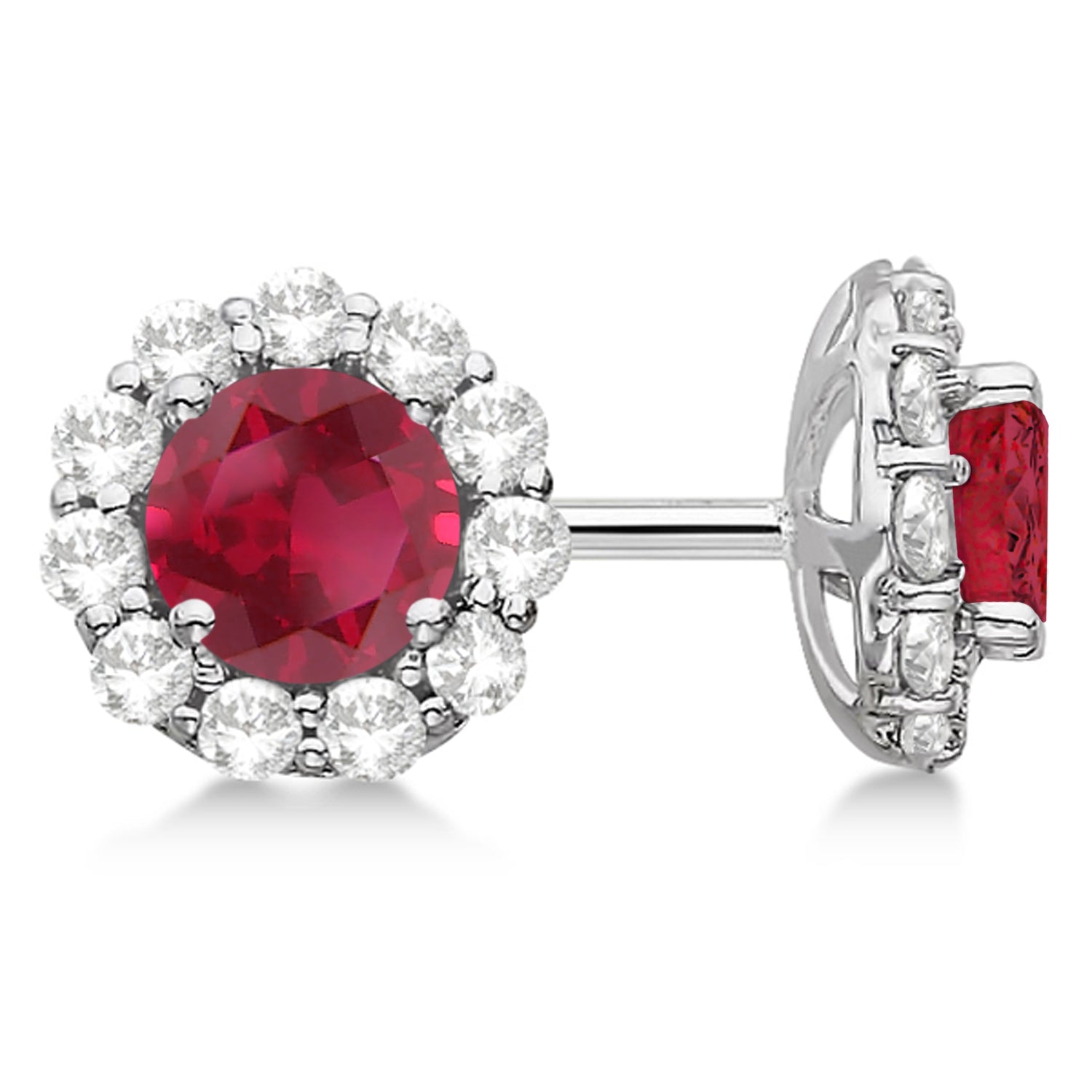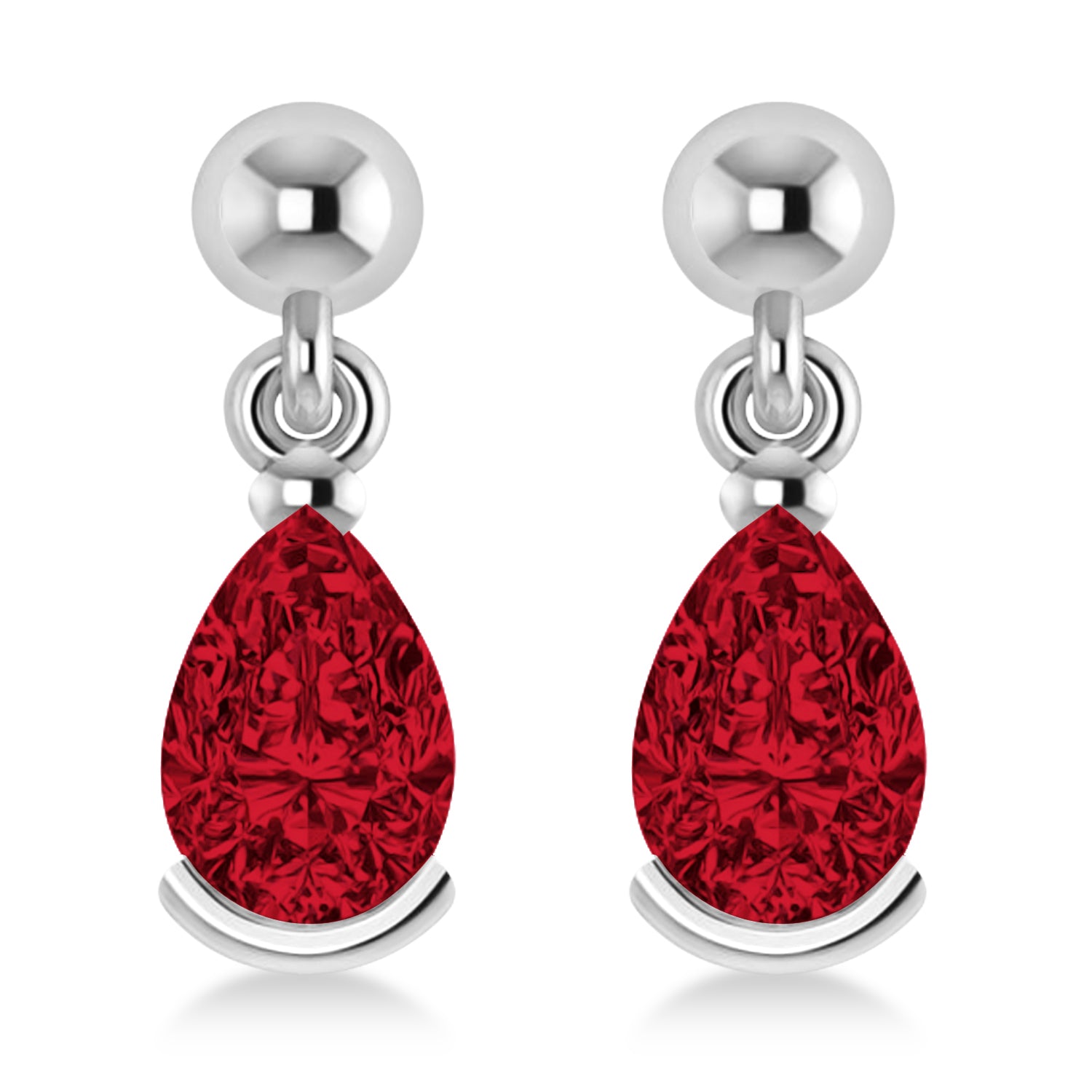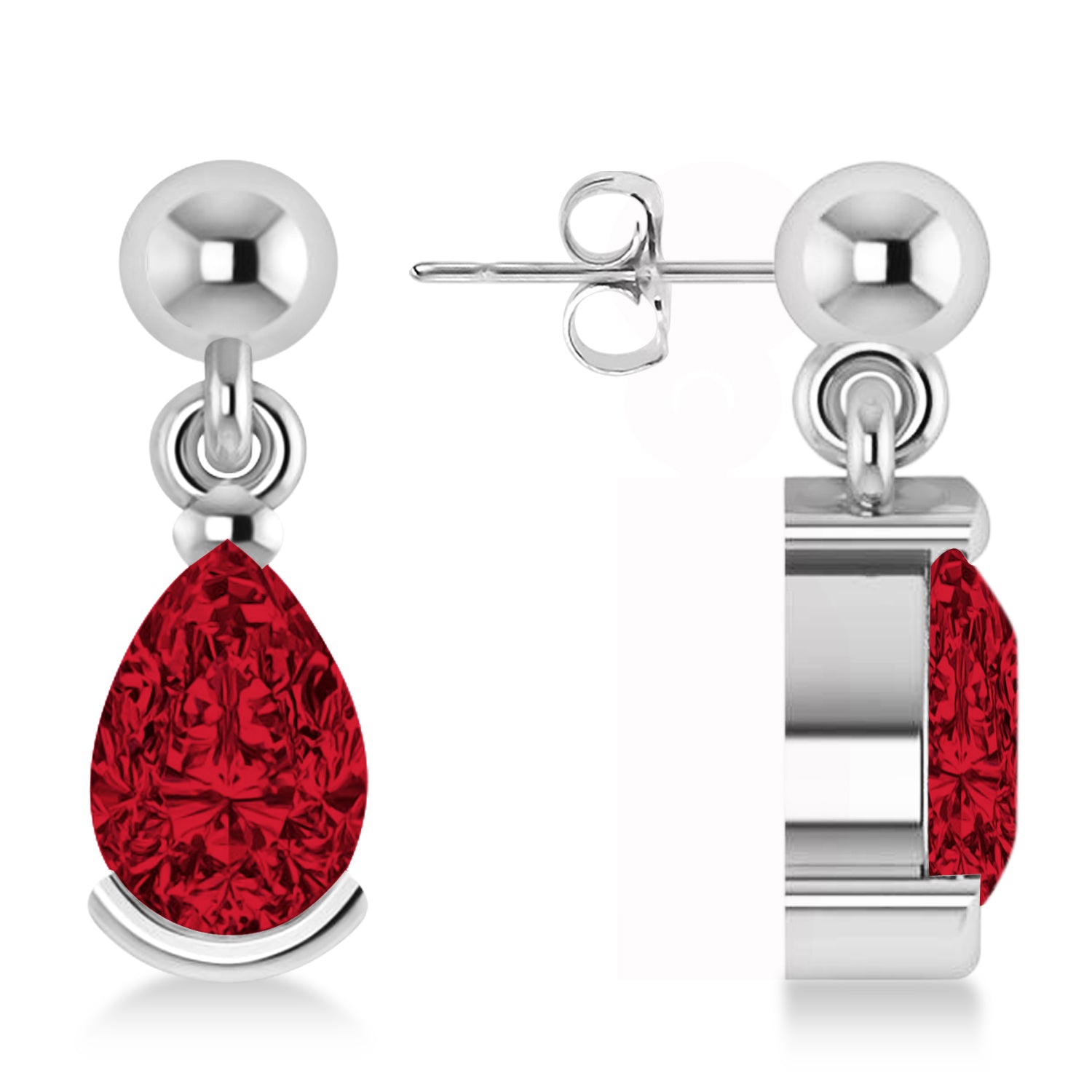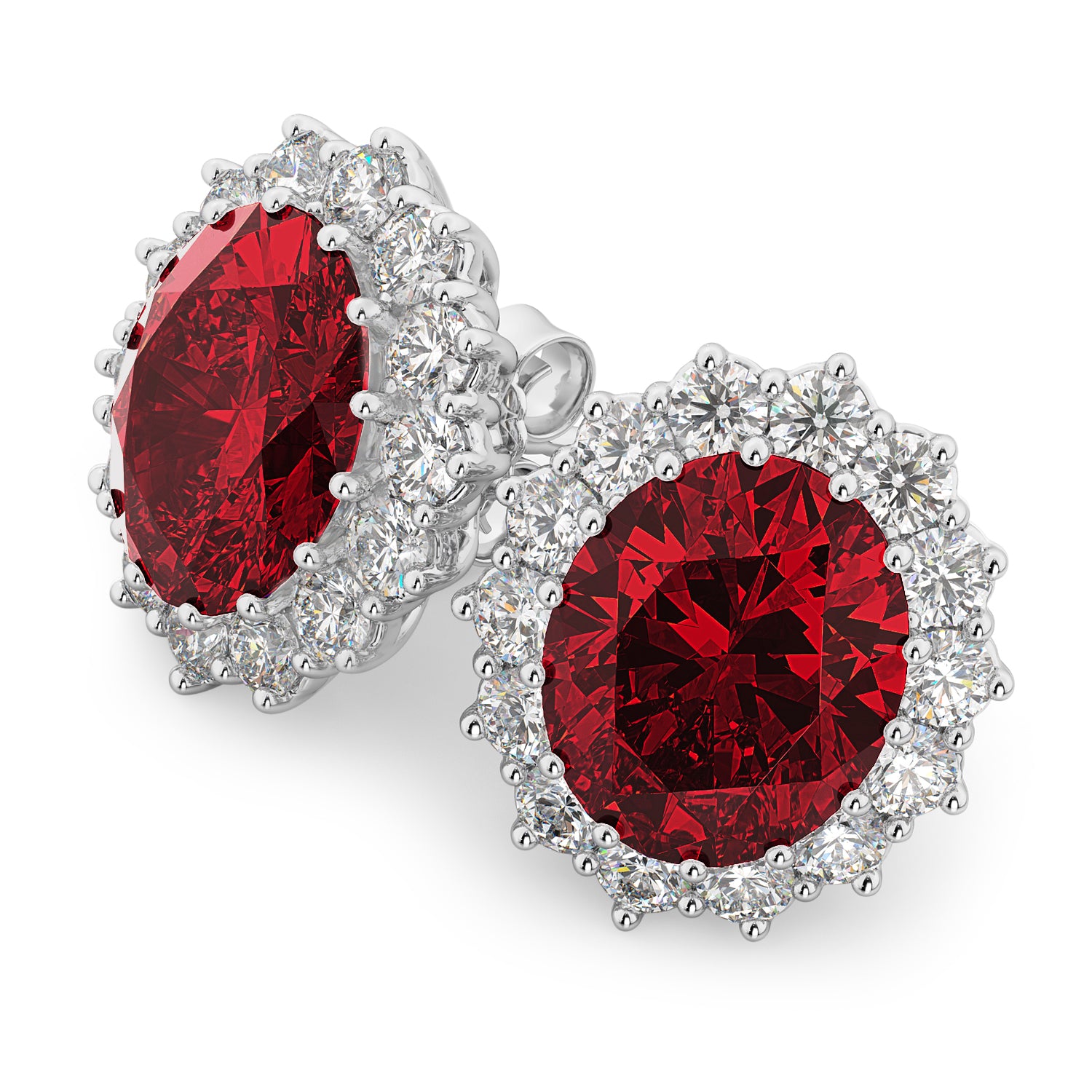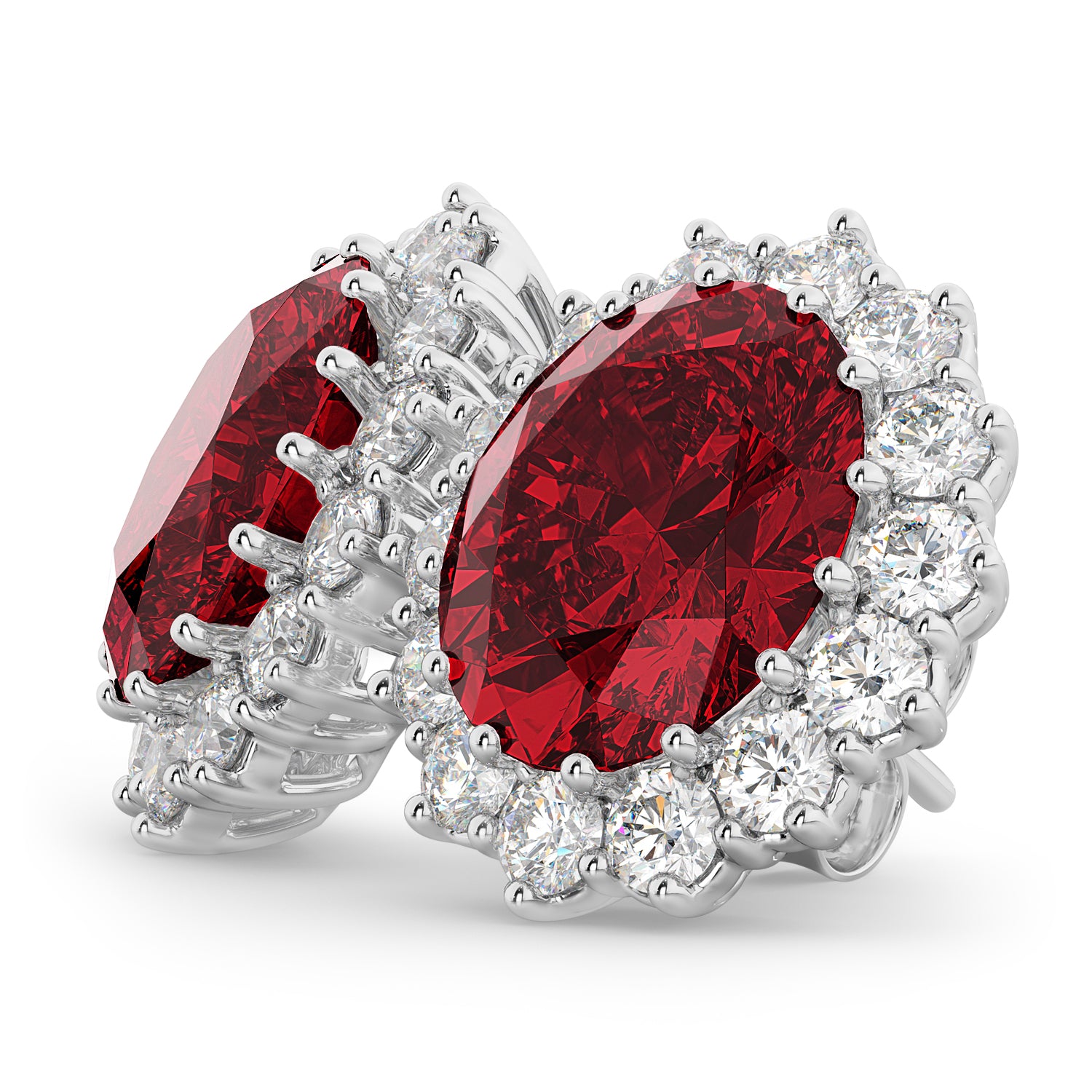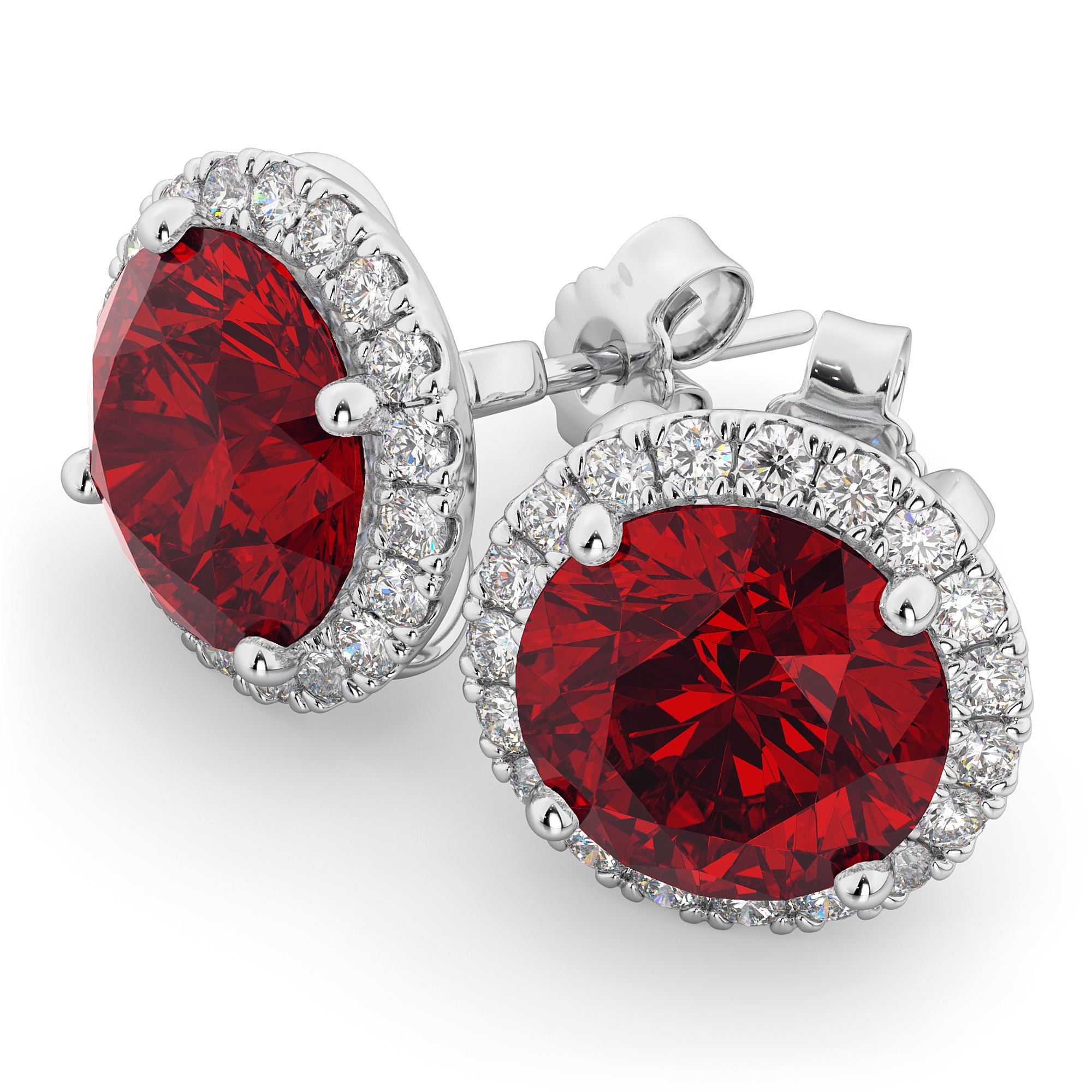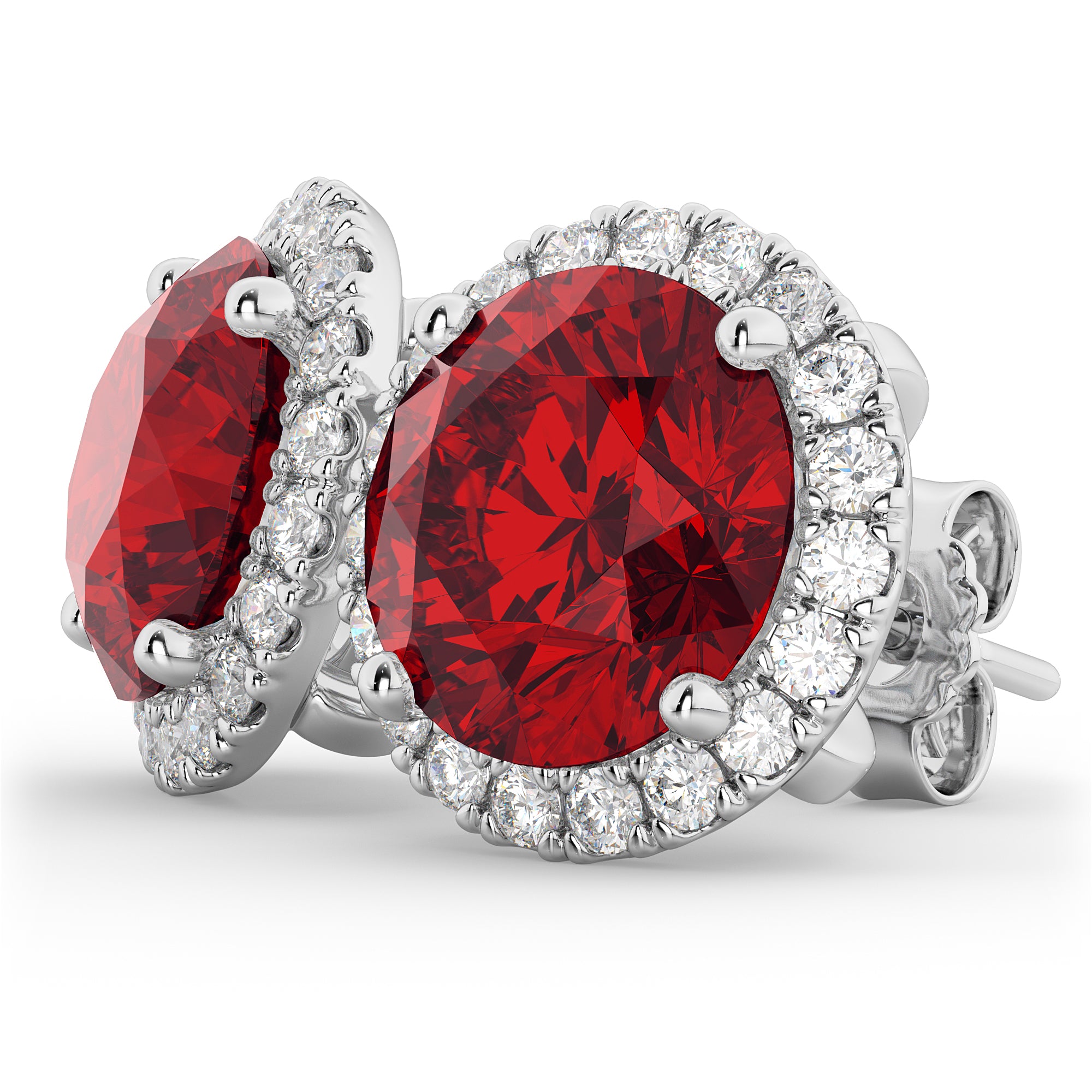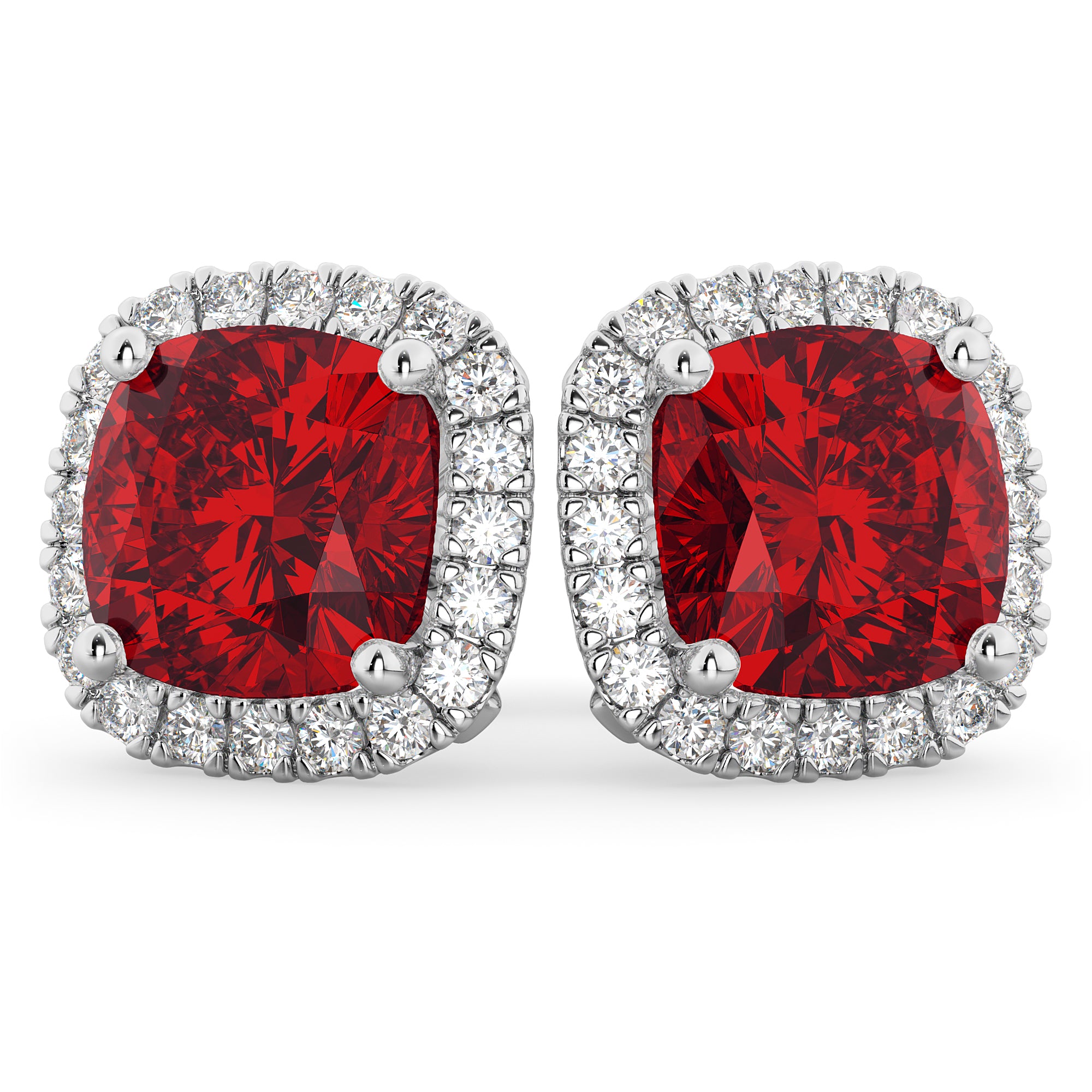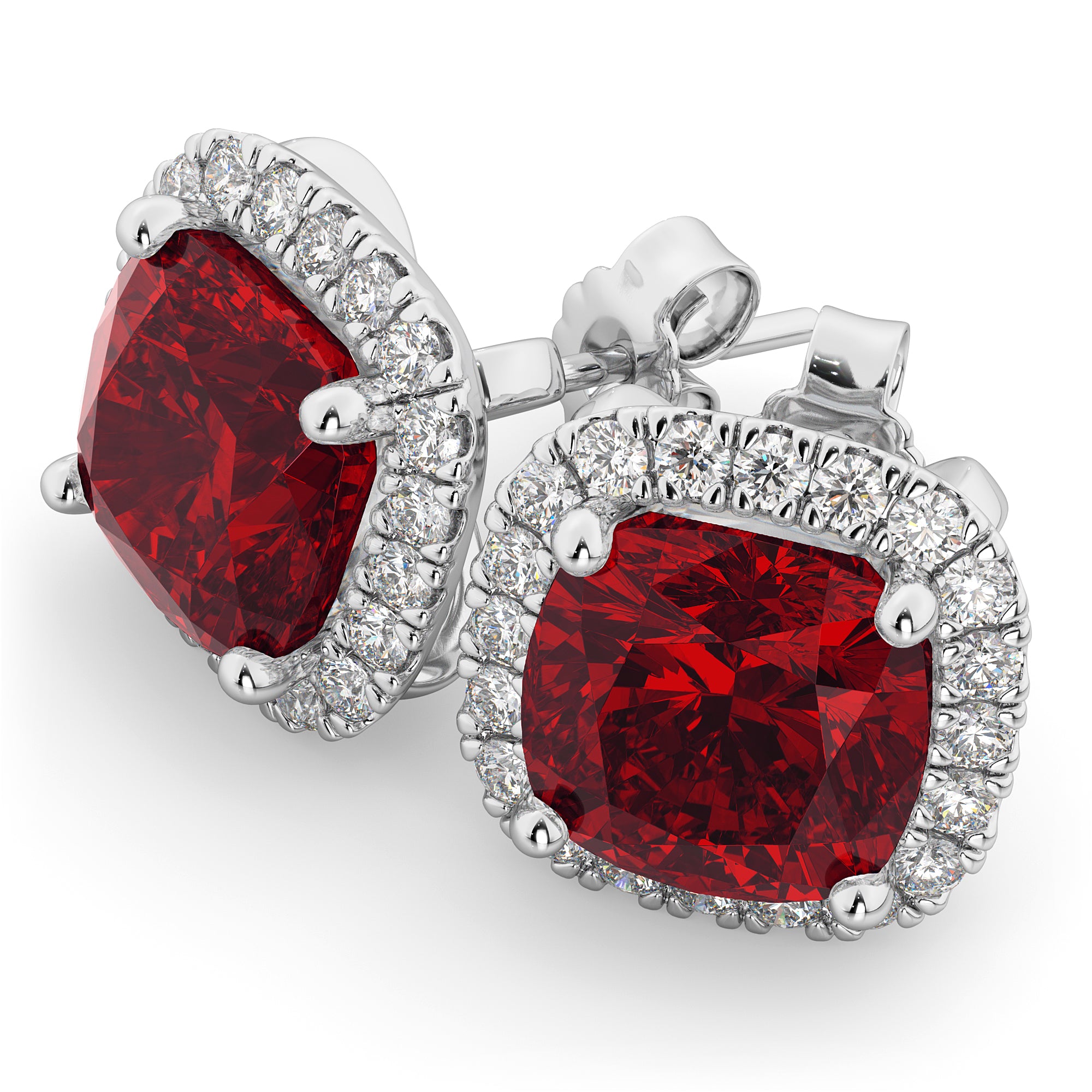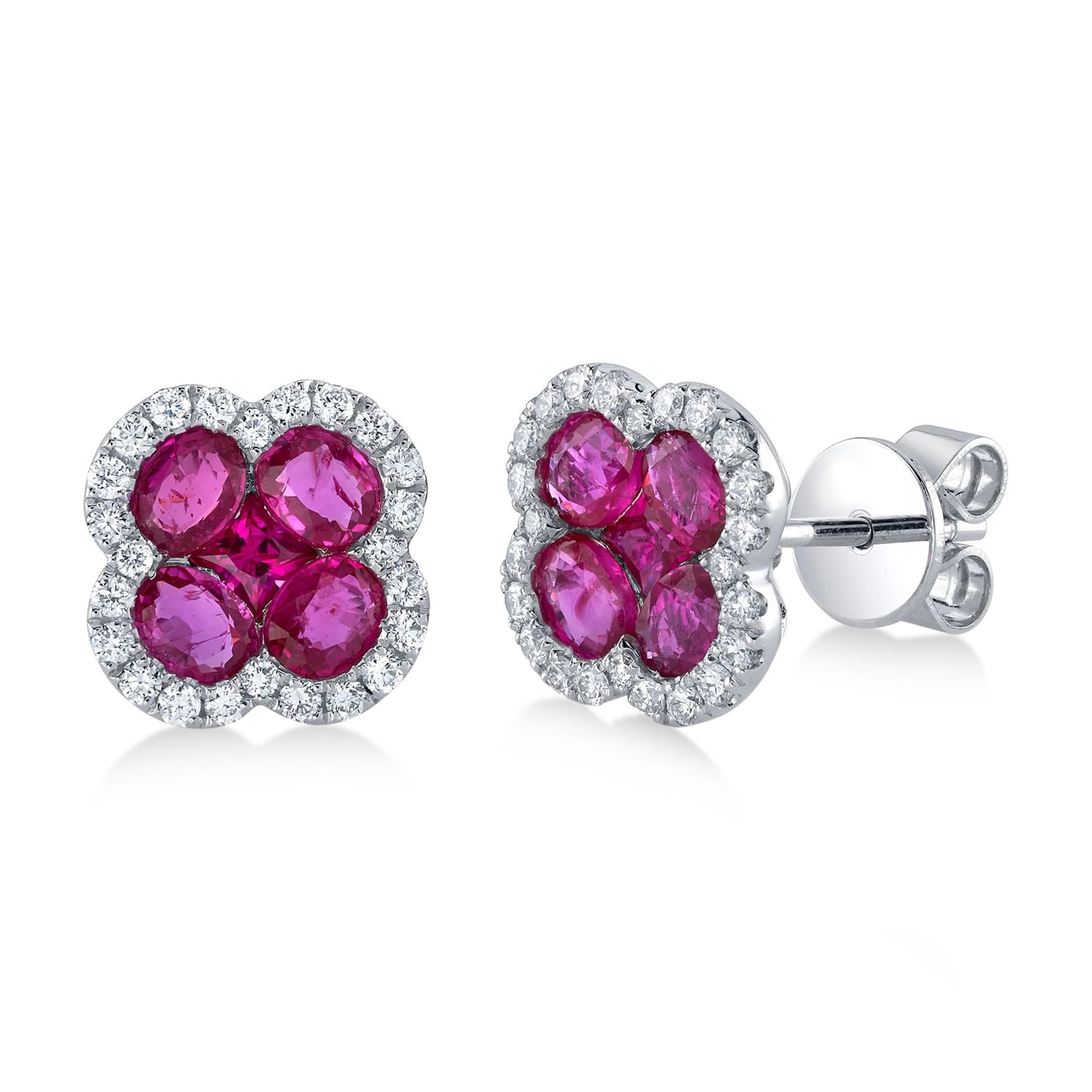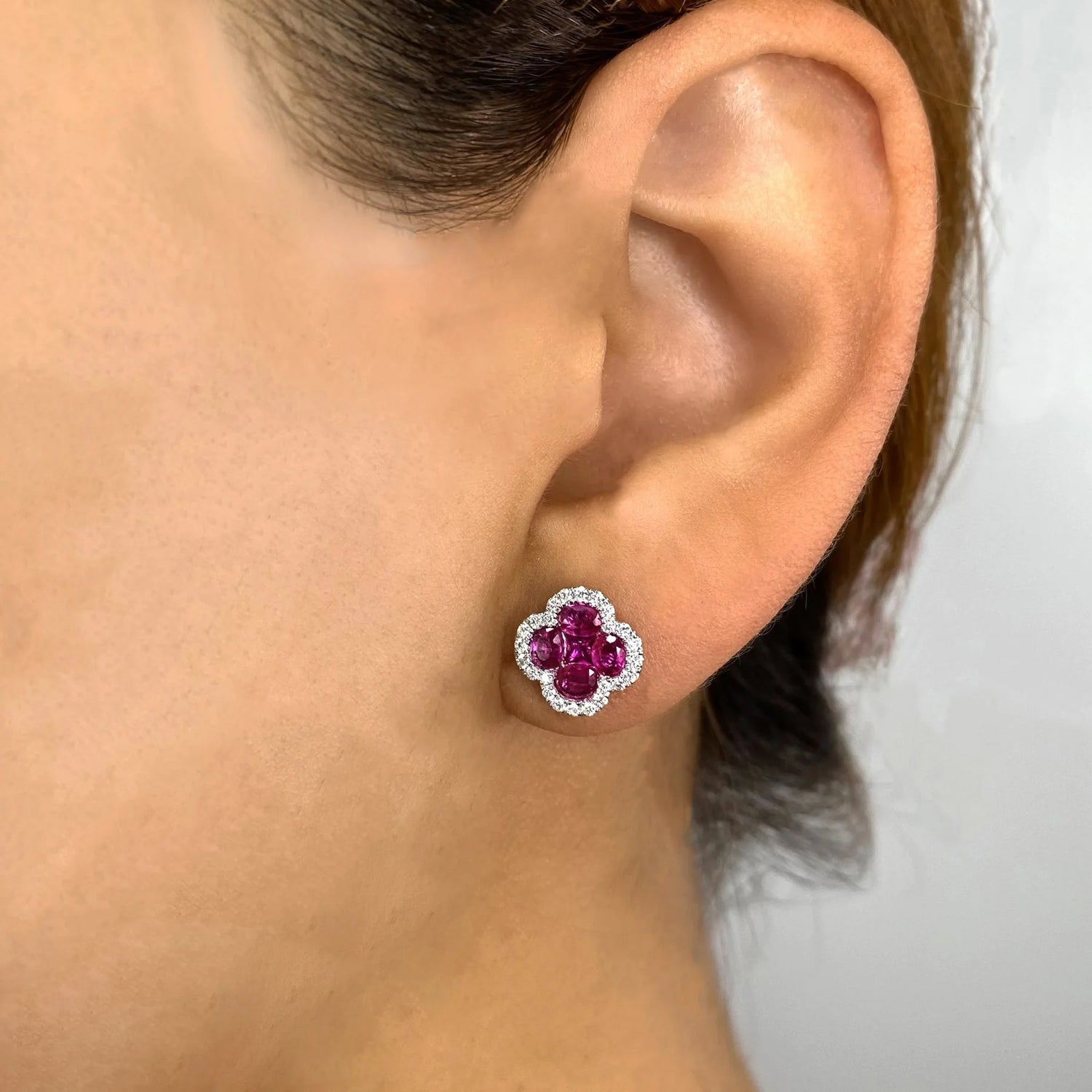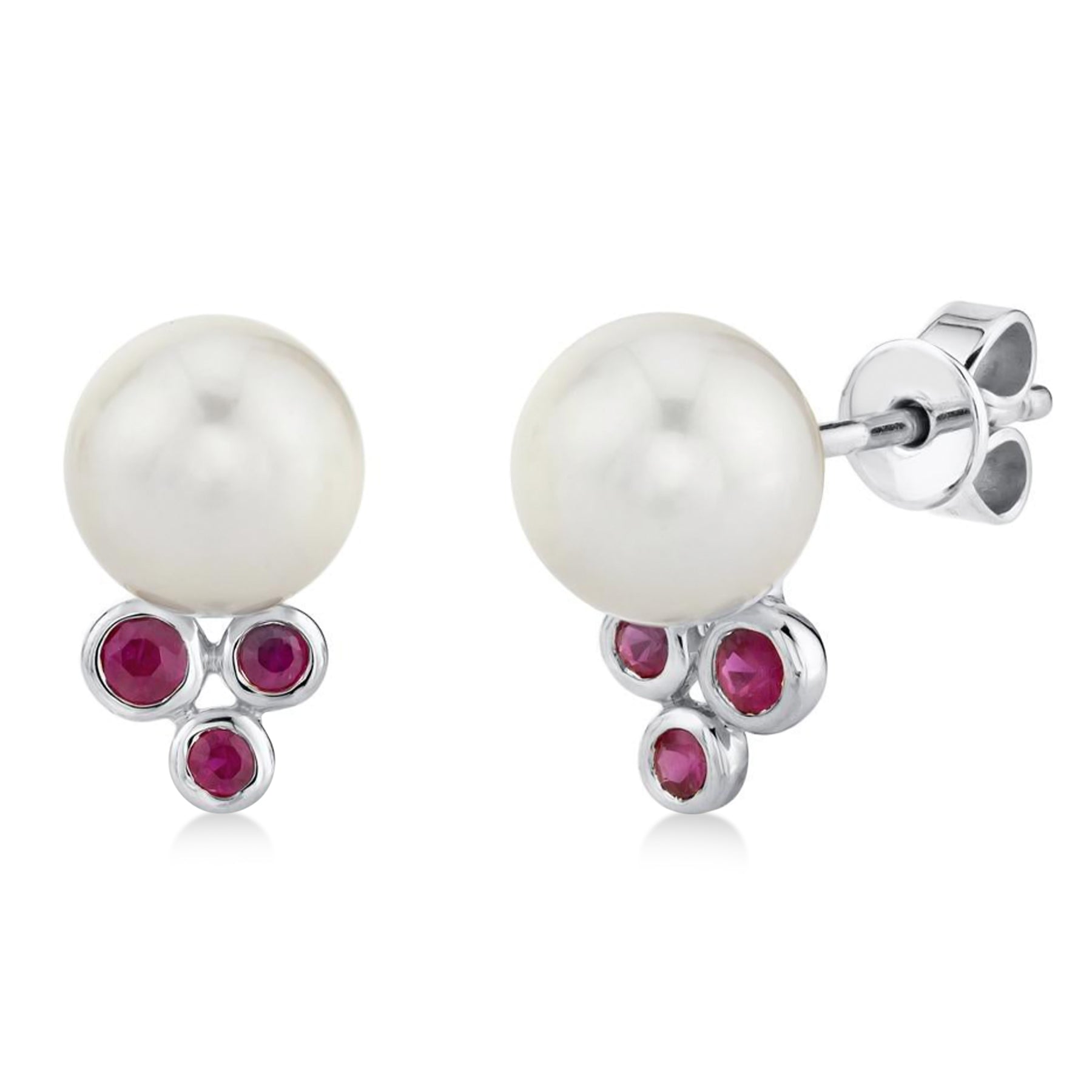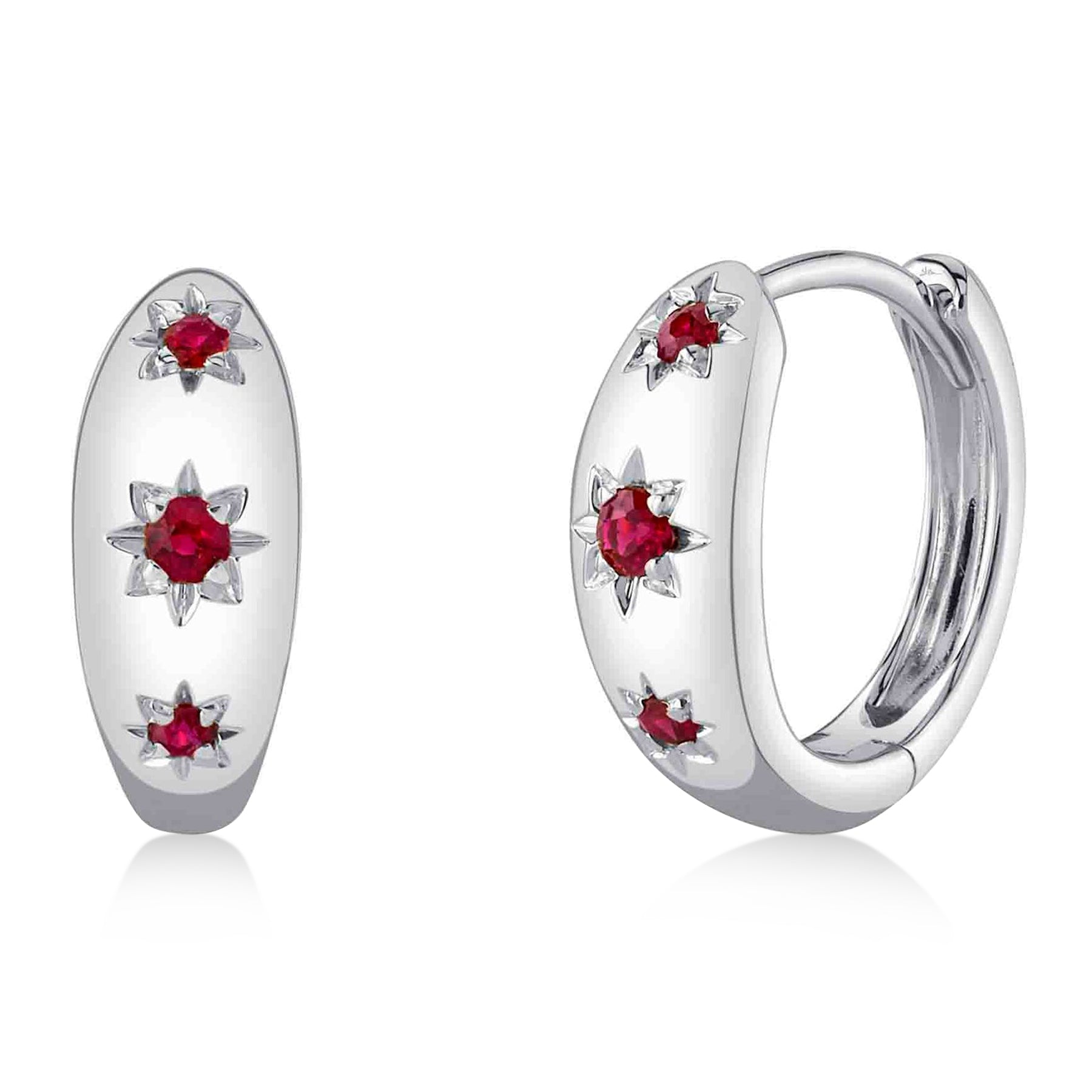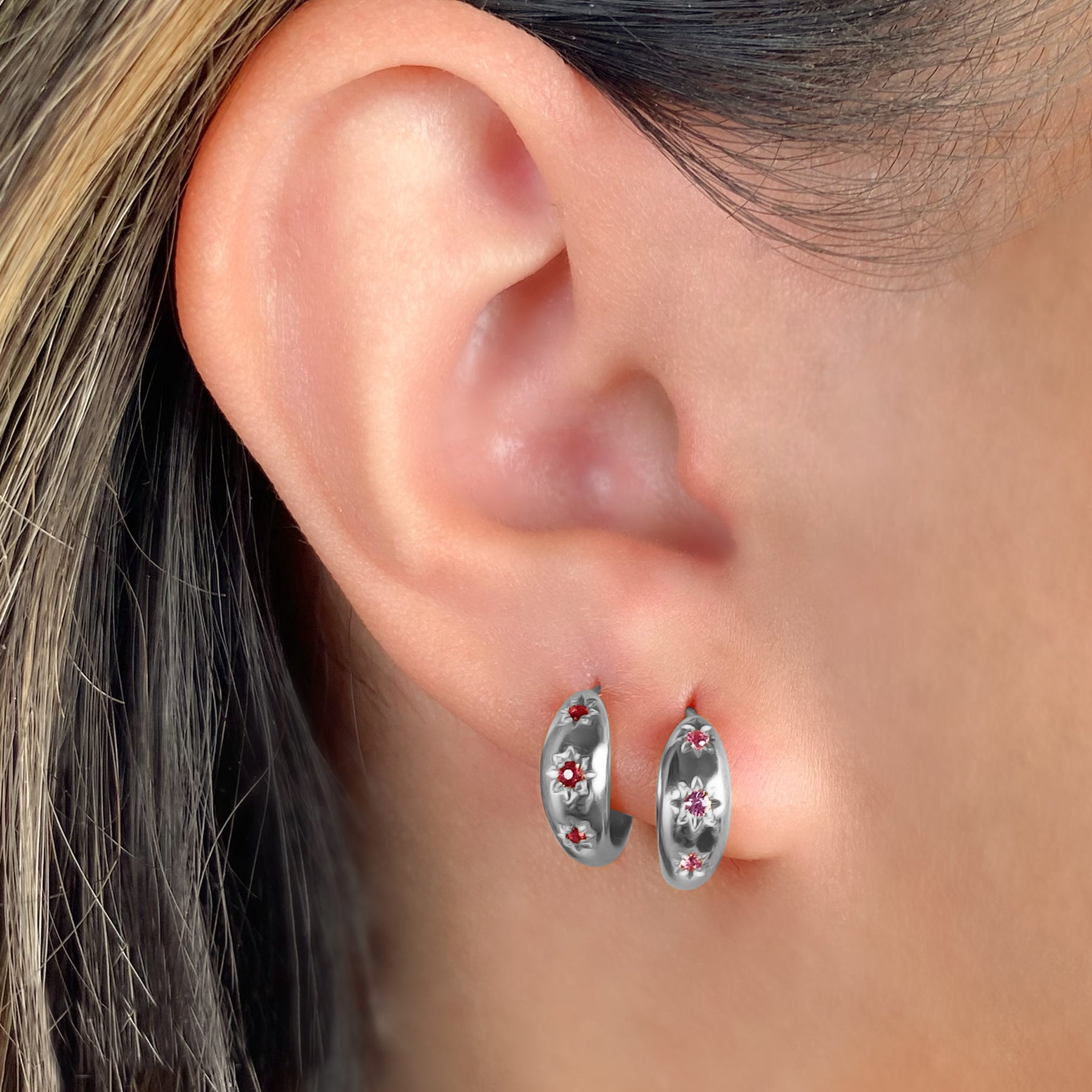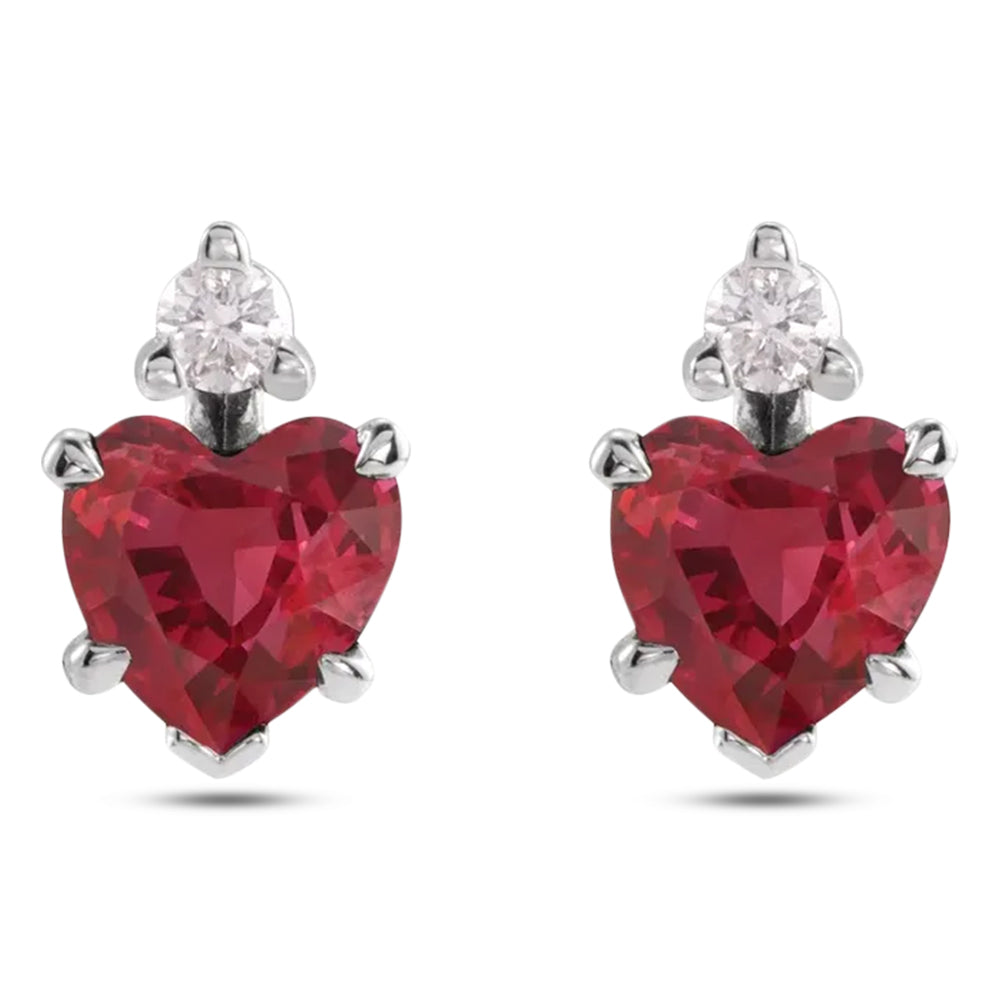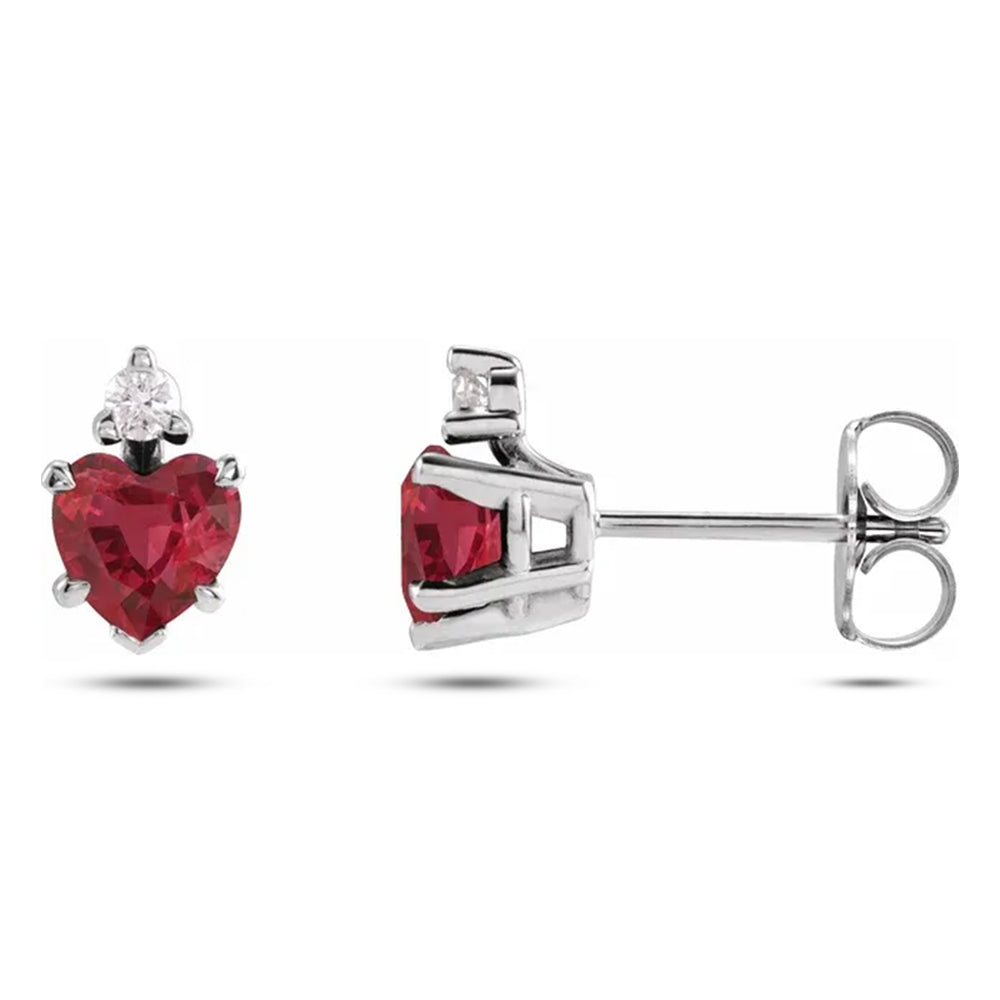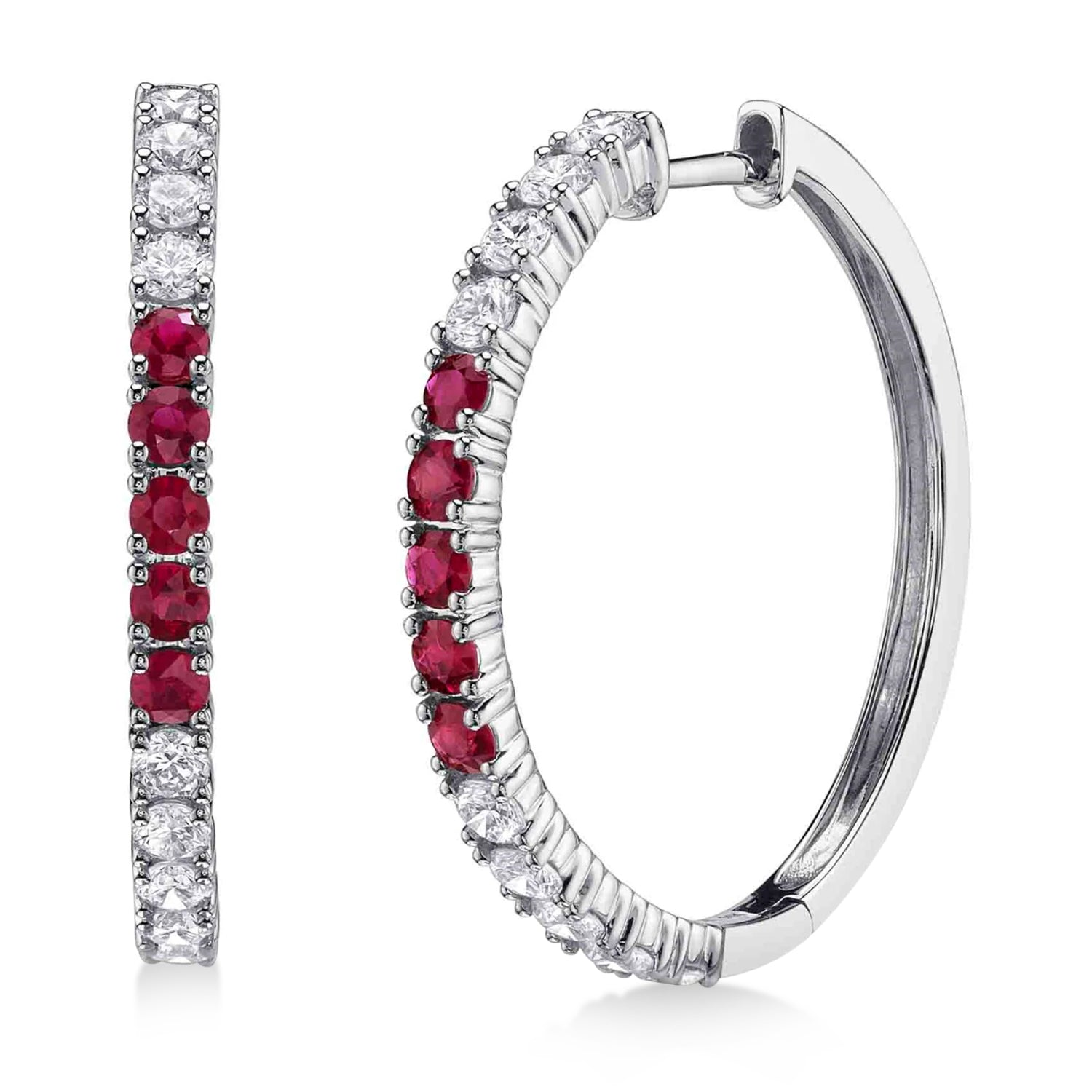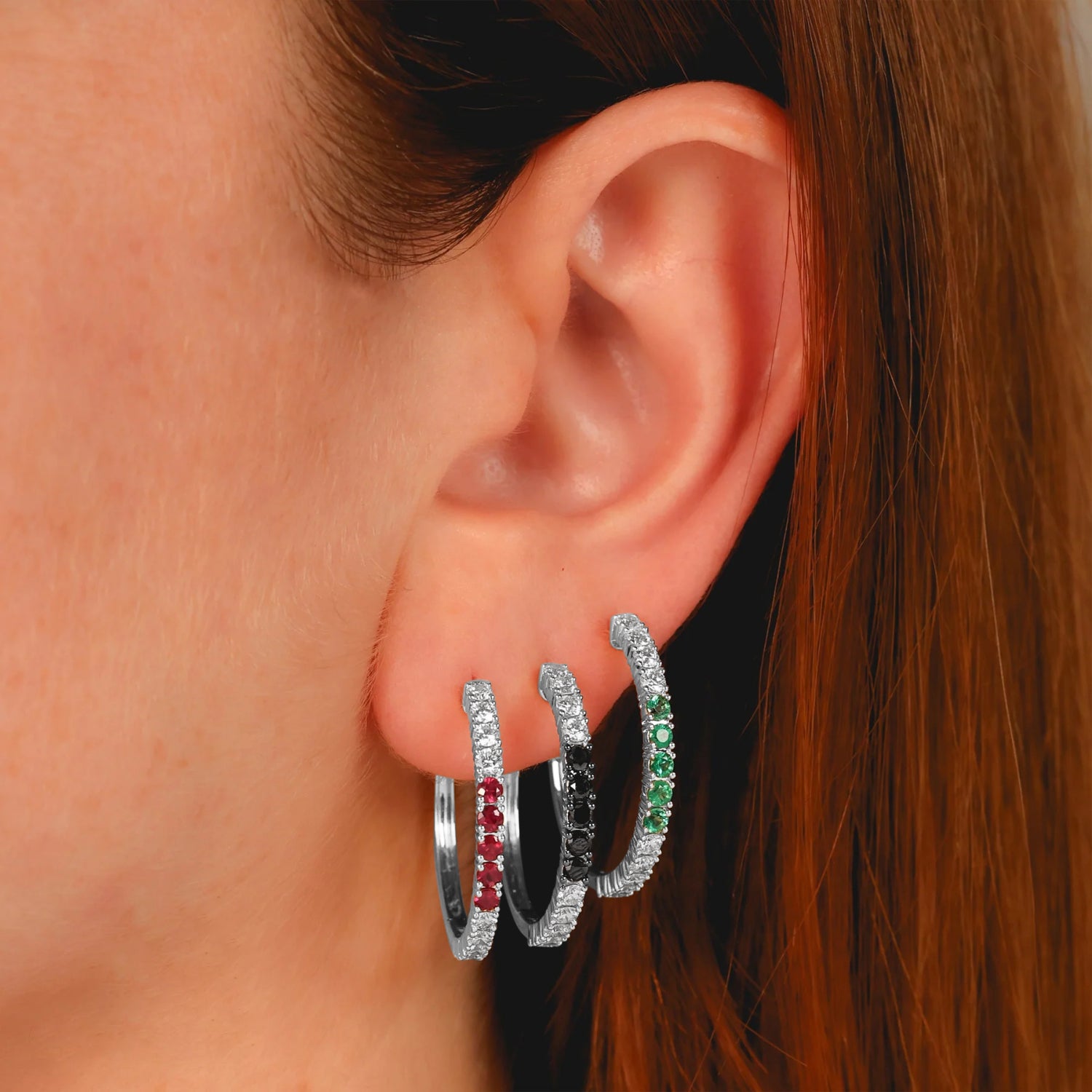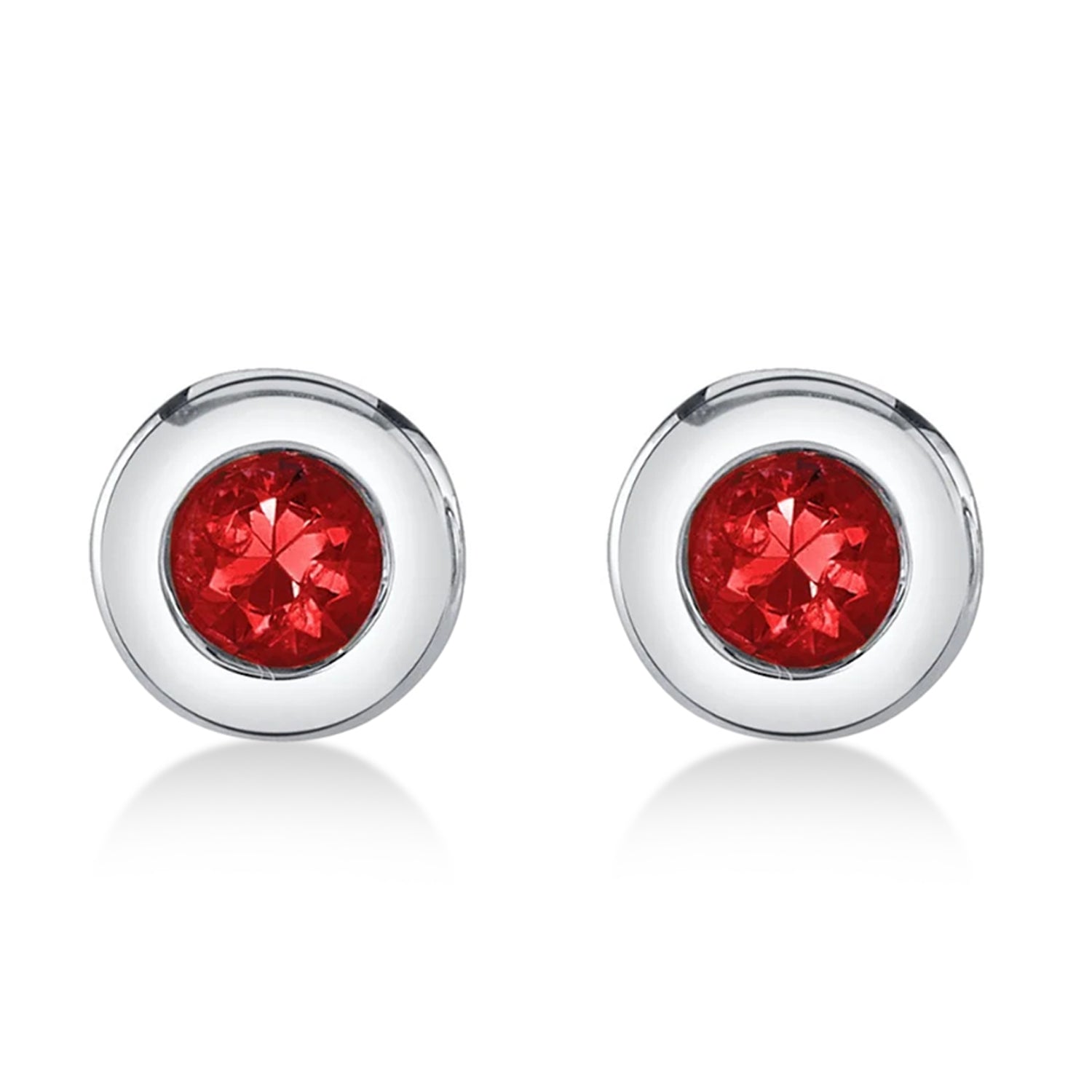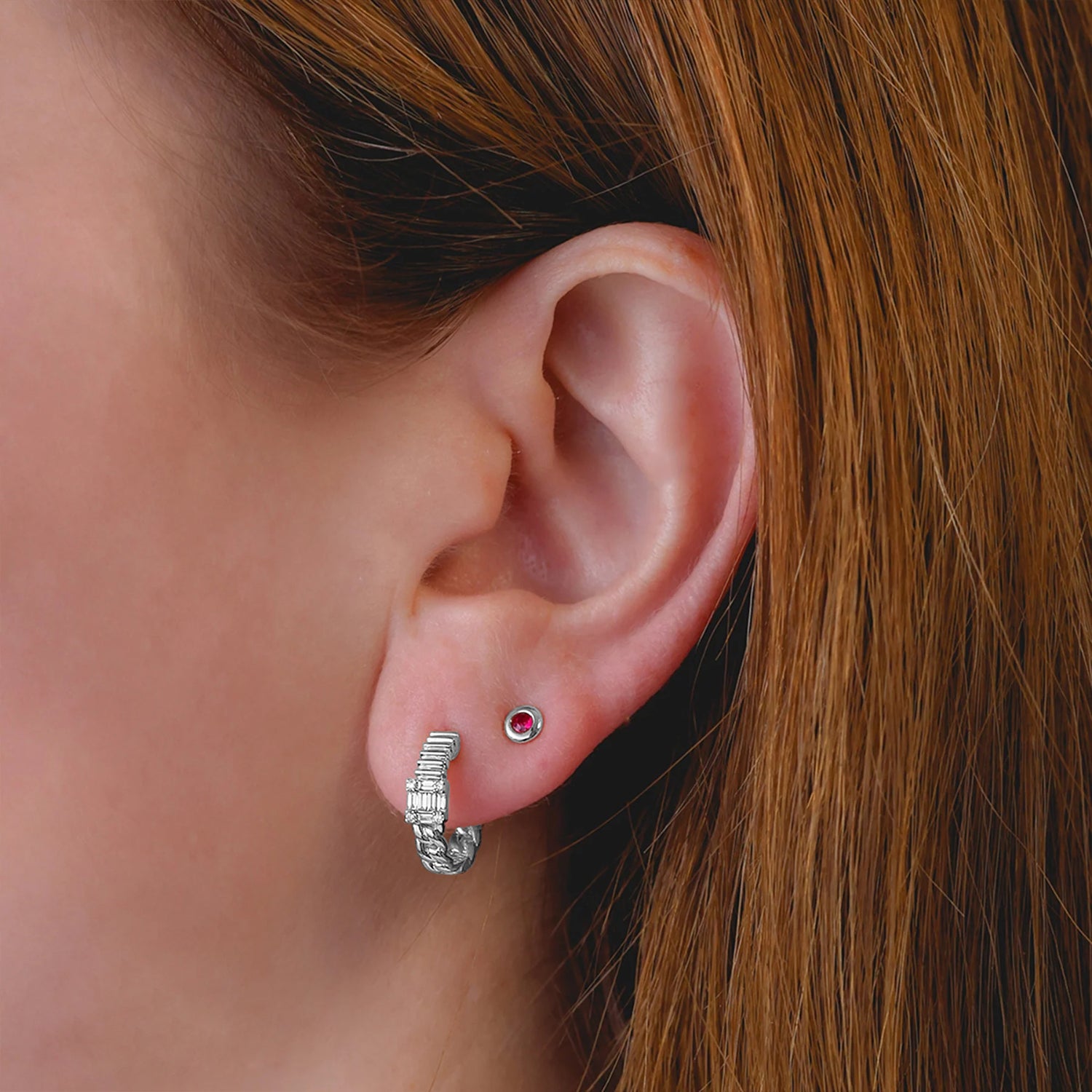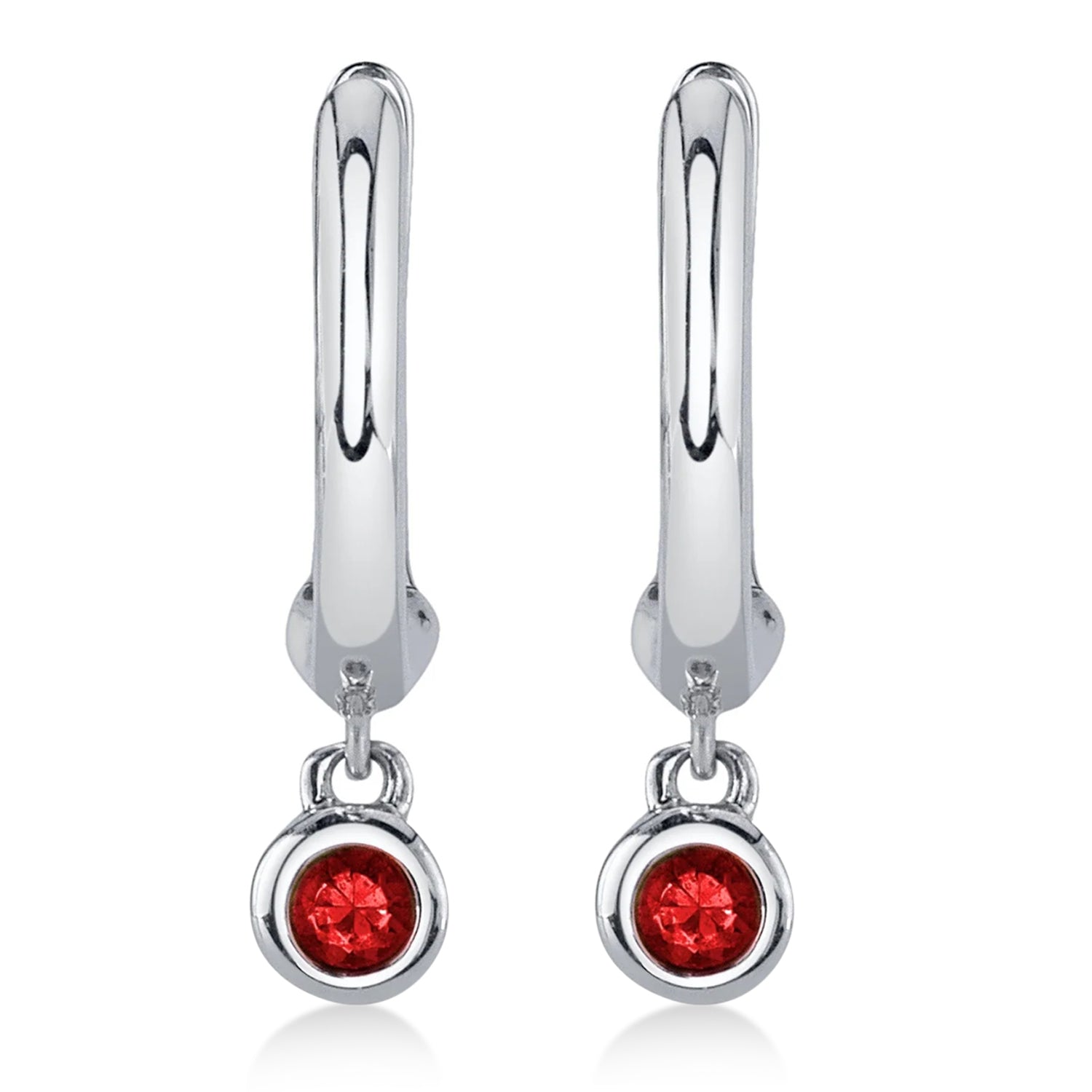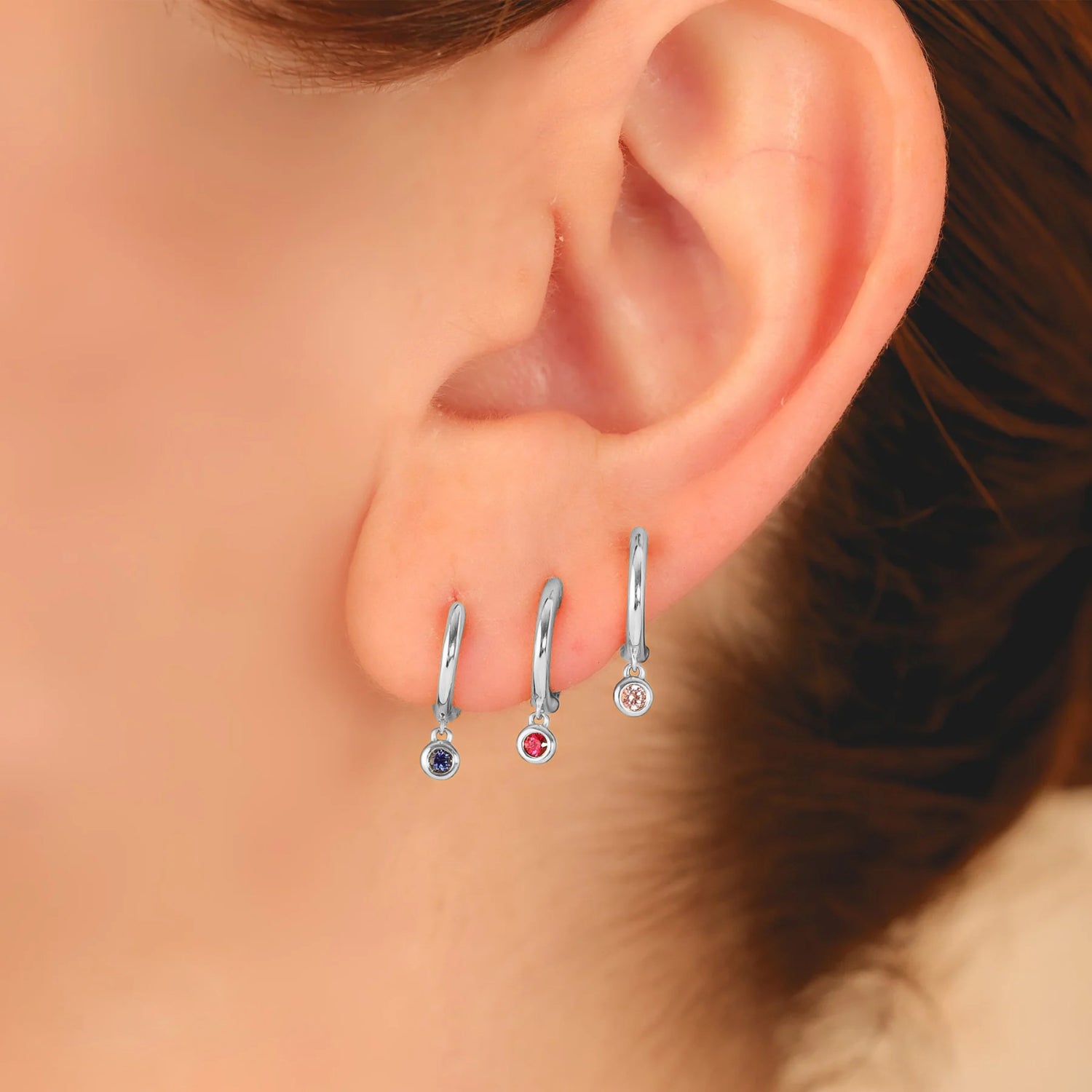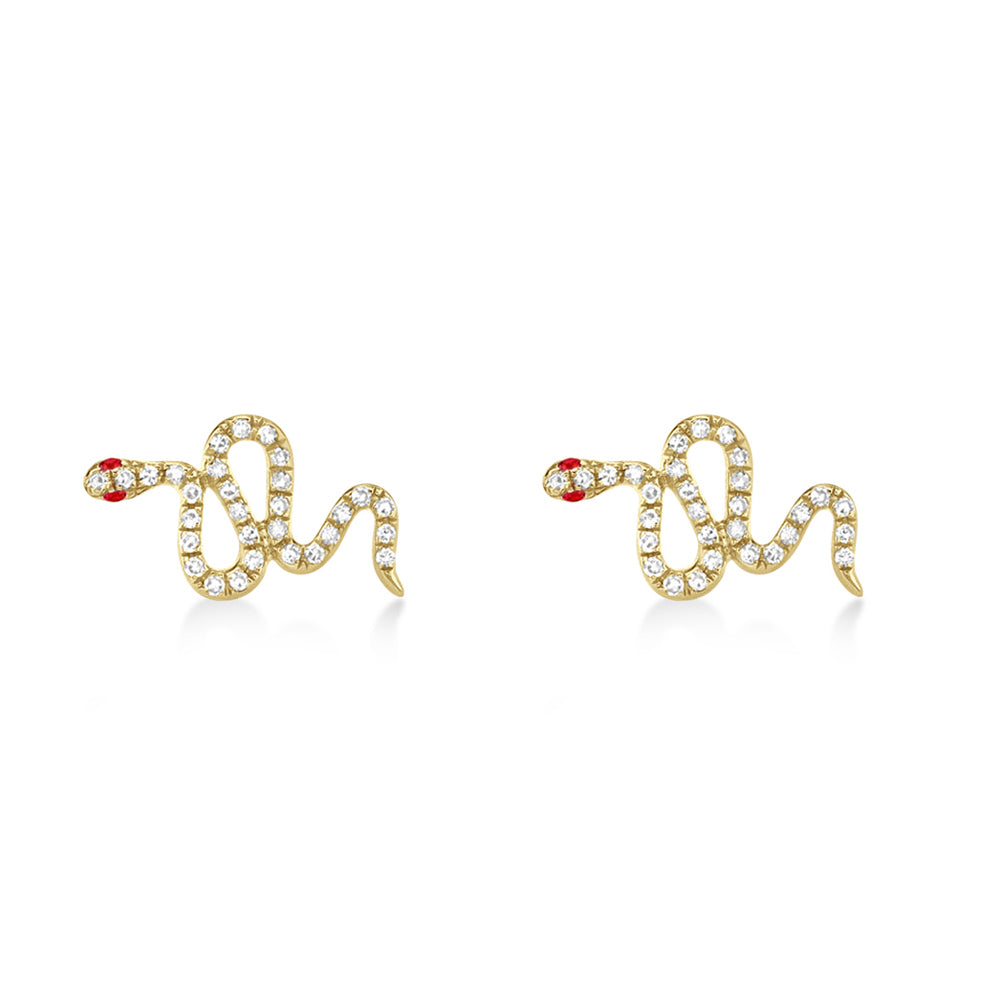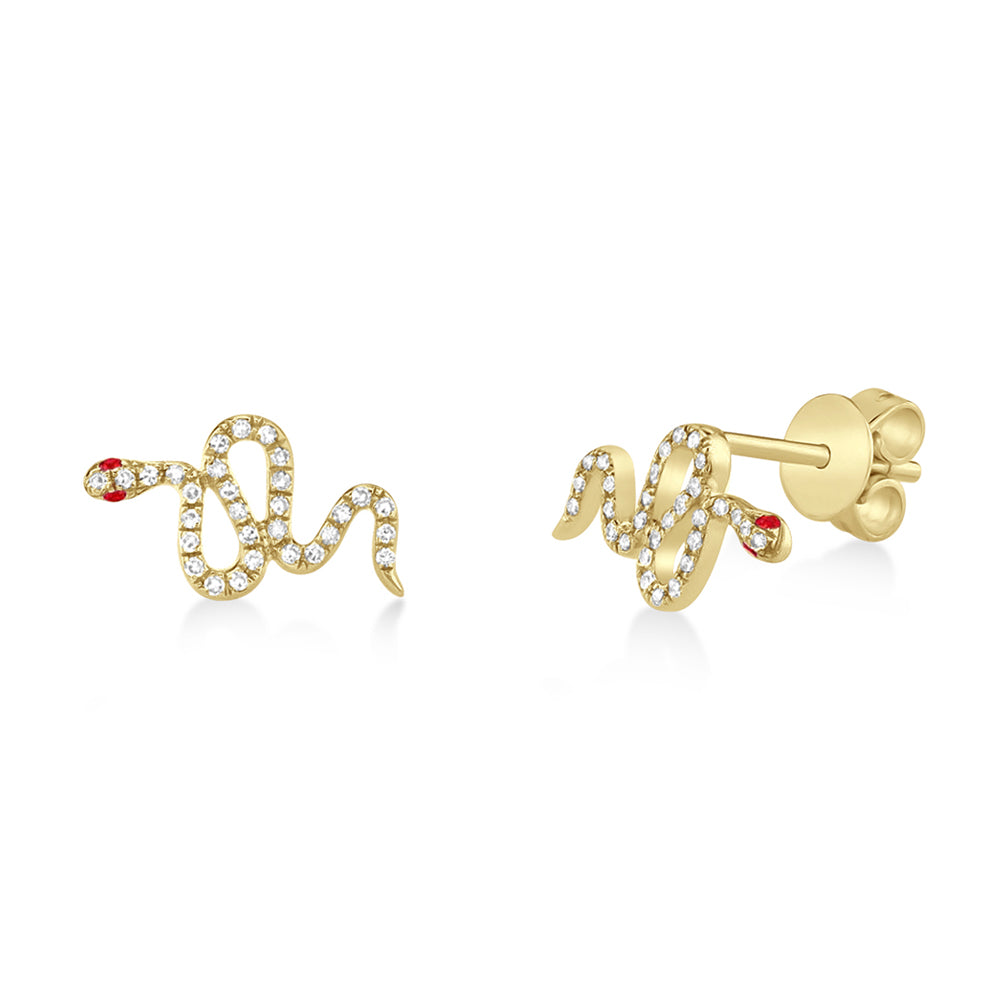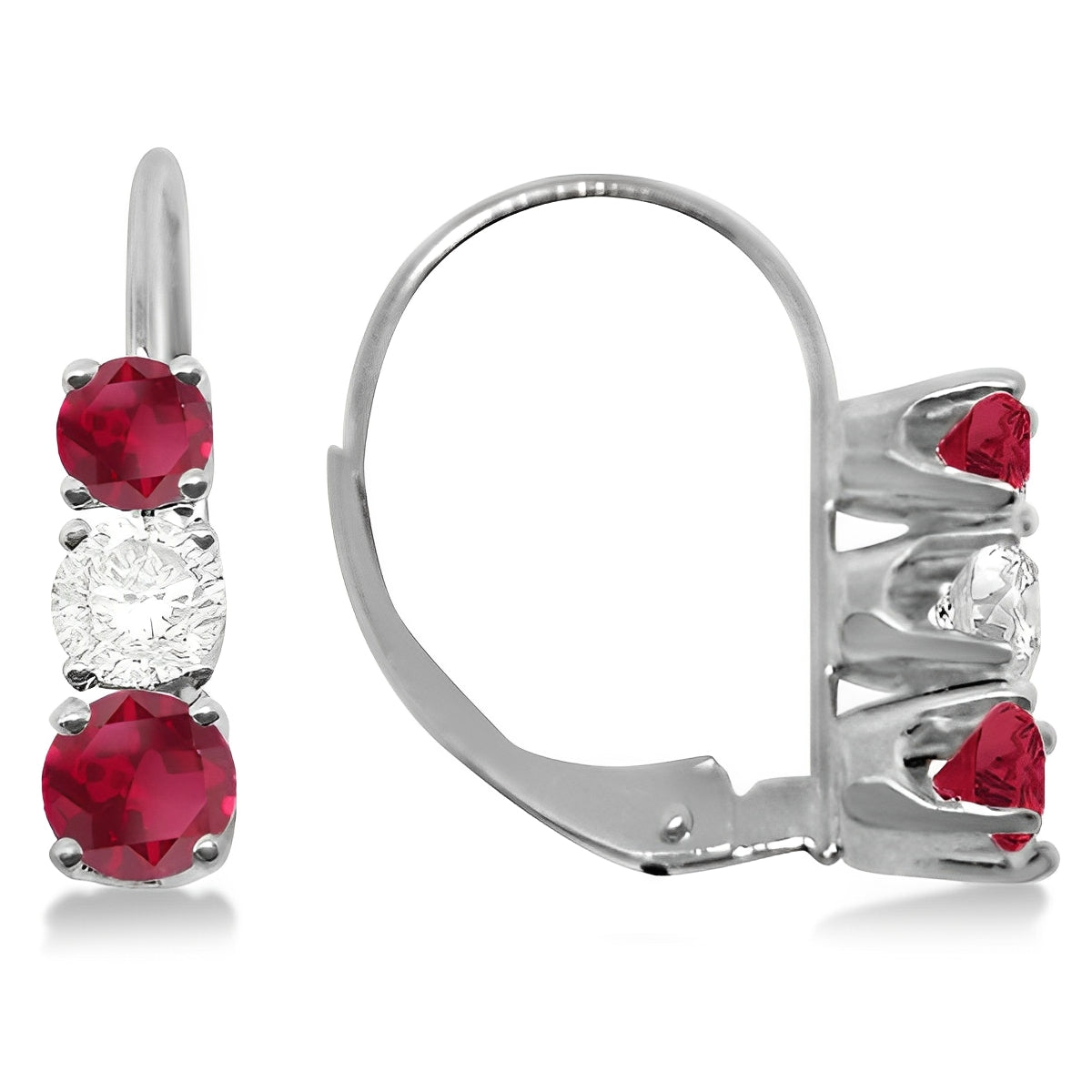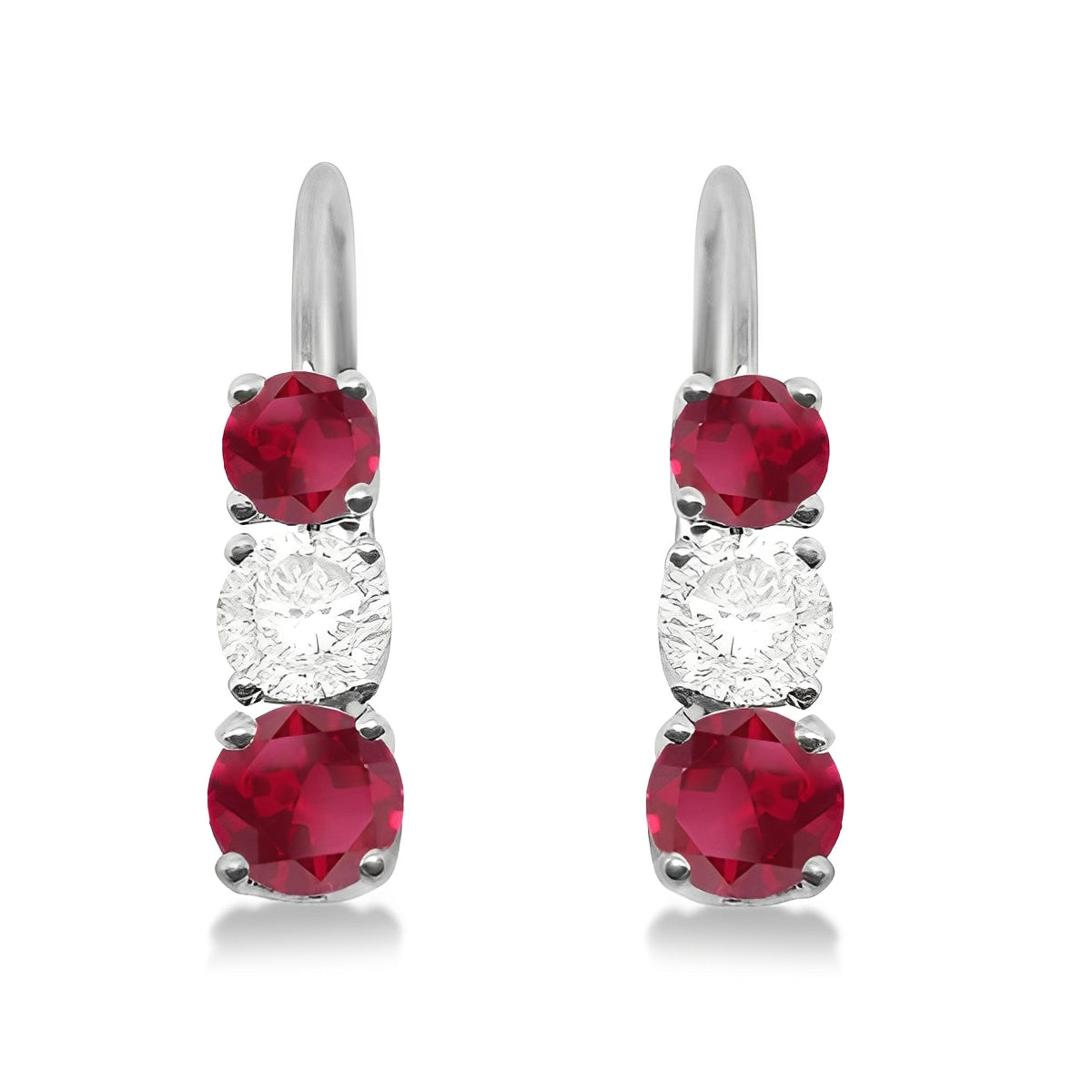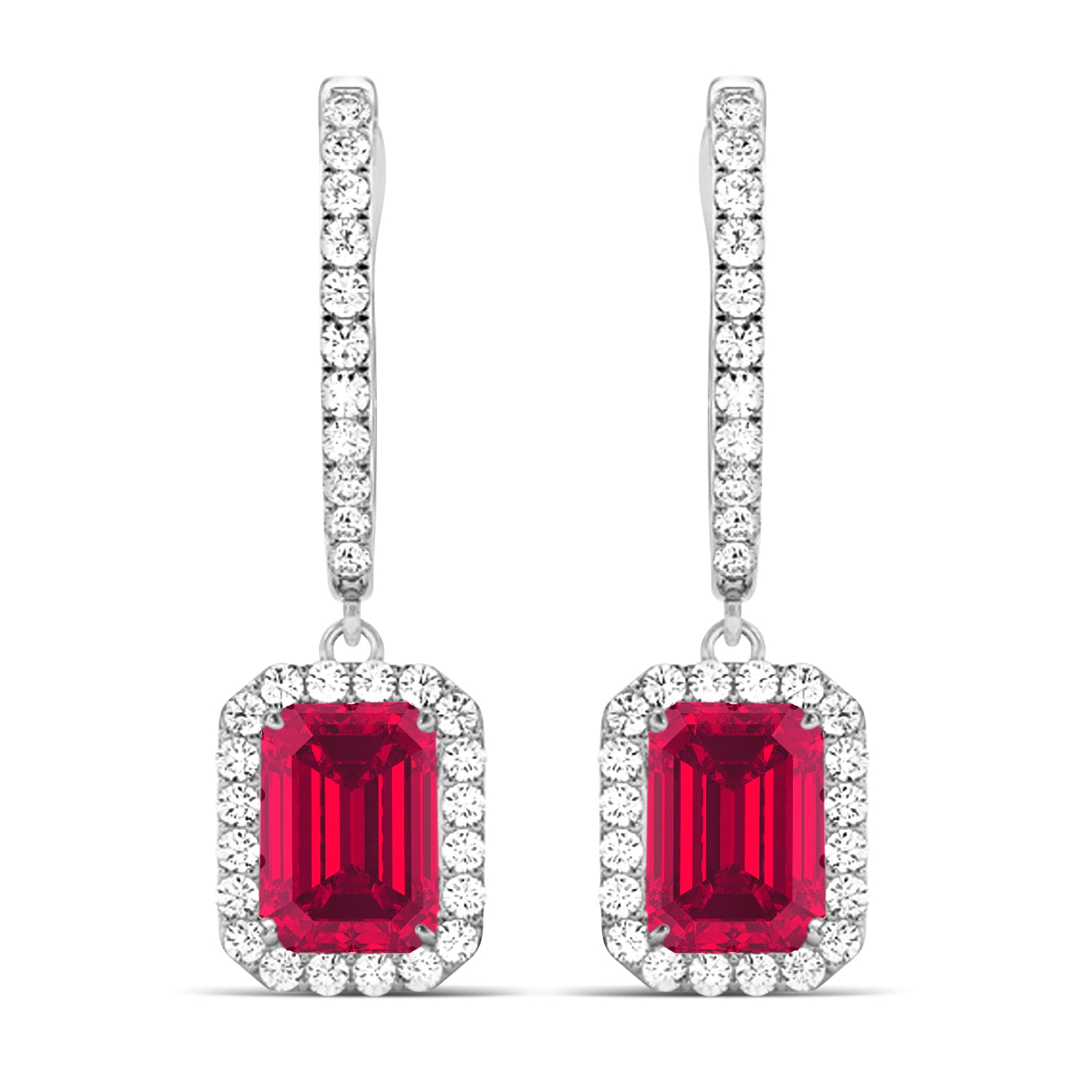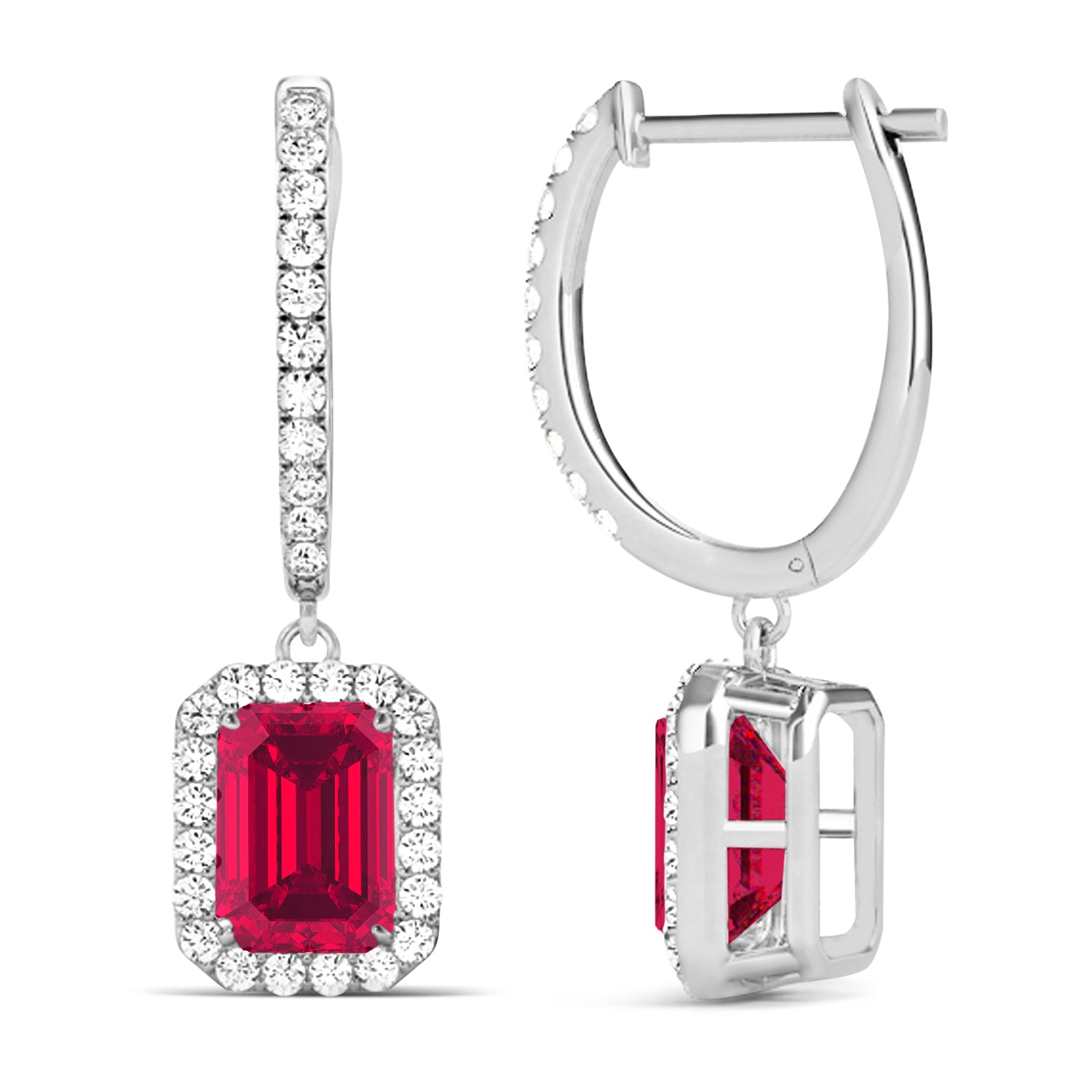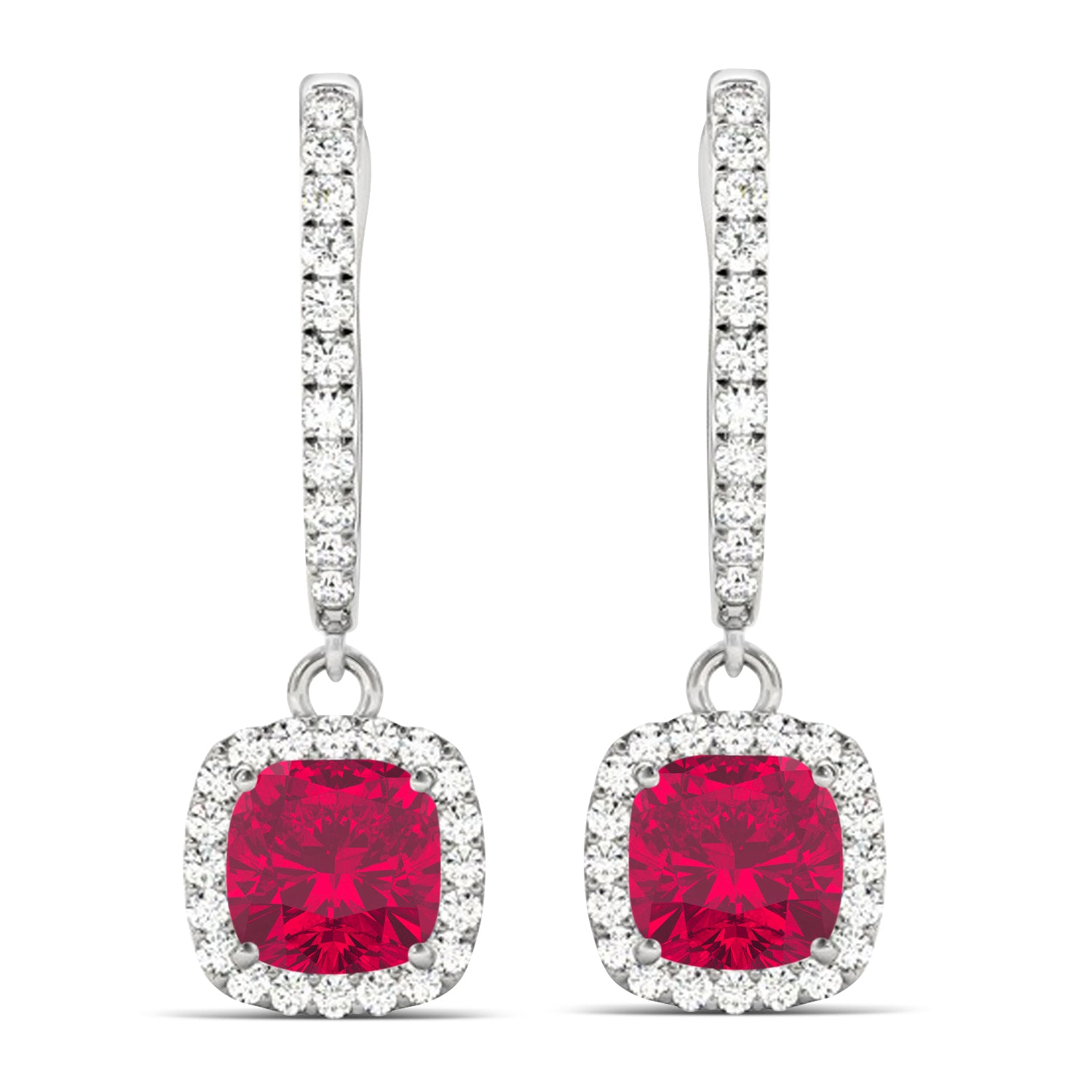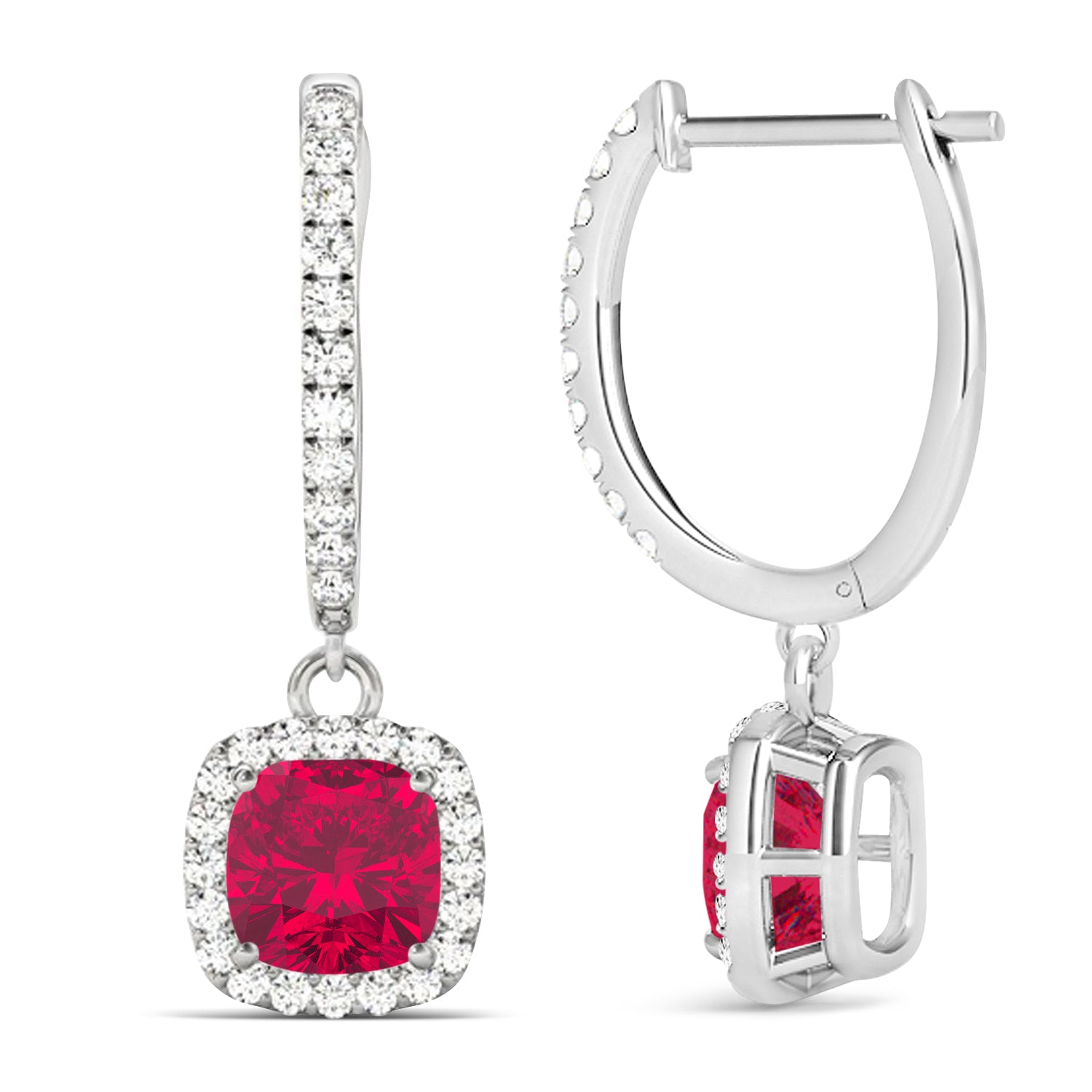Our ruby earrings are the perfect addition to your collection. With deep red hues you'll be sure to stand out at any event. Symbolizing passion, love, luck and power, a set of ruby earrings will be the perfect gift for a loved one.
Ruby Earrings
Filters
Ruby Earrings FAQ
We get a lot of questions about our Ruby earrings. Below, we've answered a few of the most popular and provided more information about this stunning gemstone.
1. What Is A Ruby?
Rubies are one of the most iconic and cherished gemstones in the world, known for their vivid red color and association with power and passion. A variety of the mineral corundum, rubies are closely related to sapphires but are distinguished by their red hue, which comes from the presence of the element chromium.
Rubies rank 9 out of 10 on the Mohs hardness scale, making them one of the hardest natural gemstones—only diamonds are harder. This durability, combined with their beauty, makes rubies perfect for everyday wear in earrings, rings, and necklaces.
The finest rubies come from Myanmar (Burma), but they are also mined in places like Thailand, Sri Lanka, Mozambique, and Madagascar. High-quality rubies can be rarer and even more valuable than diamonds of the same size. (1)
2. What Do Ruby Earrings Symbolize?
Ruby earrings are often worn as powerful symbols of love, vitality, protection, and strength. For centuries, rubies have been associated with the heart, symbolizing passion, romance, and deep emotional connection.
In ancient times, warriors wore rubies into battle believing the stones would protect them and grant courage. Today, ruby jewelry is often gifted to signify:
- - Everlasting love
- Confidence and courage
- Prosperity and good fortune
Their vibrant red color also makes them a favorite for milestone anniversaries, especially the 40th wedding anniversary, which is known as the “Ruby Anniversary.” (2)
3. What Zodiac Signs Are Ruby Earrings Associated With?
Ruby is traditionally associated with the zodiac sign:
- - Cancer (June 21 – July 22) – Rubies are thought to enhance Cancer’s emotional strength and offer protective energy.
Additionally, rubies resonate with:
- - Leo (July 23 – August 22) – Complementing Leo’s bold, fiery nature.
- Aries (March 21 – April 19) – Providing passion and leadership energy.
Rubies are also recognized as the birthstone for July, making ruby earrings a perfect birthday gift for anyone born that month. (3)
4. What Types of Rubies Exist?
Not all rubies are the same—there are several varieties, depending on origin, color saturation, and treatments:
- Burmese Rubies (Myanmar Rubies): Known for their rich, “pigeon blood” red color and high value.
Thai Rubies: Typically darker in tone, often with brownish-red hues.
Mozambican Rubies: Increasingly popular for their clarity and vibrant red color.
Treated Rubies: Many commercial rubies are heat-treated to enhance color and clarity.
Some synthetic rubies also exist and are commonly used in affordable jewelry, but these are lab-grown and not naturally mined. (3)
5. What Properties or Benefits Is Ruby Known For?
Rubies are more than just beautiful—they’re believed to offer a range of emotional and metaphysical benefits, such as:
- - Boosting energy and motivation
- Enhancing passion and drive
- Improving confidence and leadership abilities
- Encouraging love and devotion
- Offering protection against negative energy
Historically, rubies were thought to ward off danger and bring good fortune to their wearer. Whether or not you believe in gemstone energy, there's no denying the confidence boost that comes from wearing something so striking and powerful. (4)
6. How To Clean Ruby Earrings
Because rubies are quite hard and durable, cleaning them is relatively easy. Here's a safe and effective method:
- 1. Soak the earrings in warm, soapy water (use a mild dish soap).
2. Gently scrub with a soft-bristled toothbrush, especially behind the gemstone.
3. Rinse with warm water and pat dry with a soft cloth.
4. Avoid harsh chemicals, bleach, or abrasive cleaners.
5. Store ruby earrings separately in a soft-lined jewelry box to prevent scratches from other stones. (5)
7. What Colors Go Best With Ruby Earrings?
Ruby’s bold red color offers rich styling versatility. Here are some beautiful pairings:
- - Gold settings, especially yellow or rose gold, enhance ruby’s warmth.
- Neutral tones like ivory, charcoal, or taupe make the red hue stand out.
- Black or navy creates a dramatic contrast, allowing the earrings to truly shine.
- Emerald green or sapphire blue can complement rubies in multi-gem designs for a regal look.
- Soft pinks offer a romantic, monochromatic palette.
Whether worn for evening elegance or everyday sophistication, ruby earrings bring passion and depth to any ensemble.
8. Interesting Facts About Rubies
Rubies are part of the corundum family—the same mineral as sapphires—but what sets them apart is their vibrant red color, caused by traces of chromium. In ancient Sanskrit, rubies were known as ratnaraj, meaning “king of precious stones,” a title that reflects their long-standing association with royalty, power, and spirituality.
With a hardness of 9 on the Mohs scale, rubies are incredibly durable—second only to diamonds—making them ideal for everyday wear. Some of the most prized rubies come from Myanmar (formerly Burma), especially those with the coveted “pigeon blood” red hue, known for their intense, vivid color and high value.
Throughout history, rubies were worn by warriors and rulers as talismans of protection, courage, and vitality. Ancient traders once carried them along the Silk Road, where they were treasured by civilizations from Asia to the Mediterranean.
Today, rubies remain a symbol of deep love and passion, often gifted on the 15th and 40th wedding anniversaries. One of the most famous rubies in the world—the 25.59-carat Sunrise Ruby—sold for over $30 million, setting a record at auction.
Although rubies and pink sapphires are chemically similar, rubies are defined by their rich red color and specific chromium content. Major sources include Myanmar, Mozambique, Thailand, and Madagascar, with each region producing rubies that vary in color and clarity—adding to their uniqueness and global appeal. (1)
